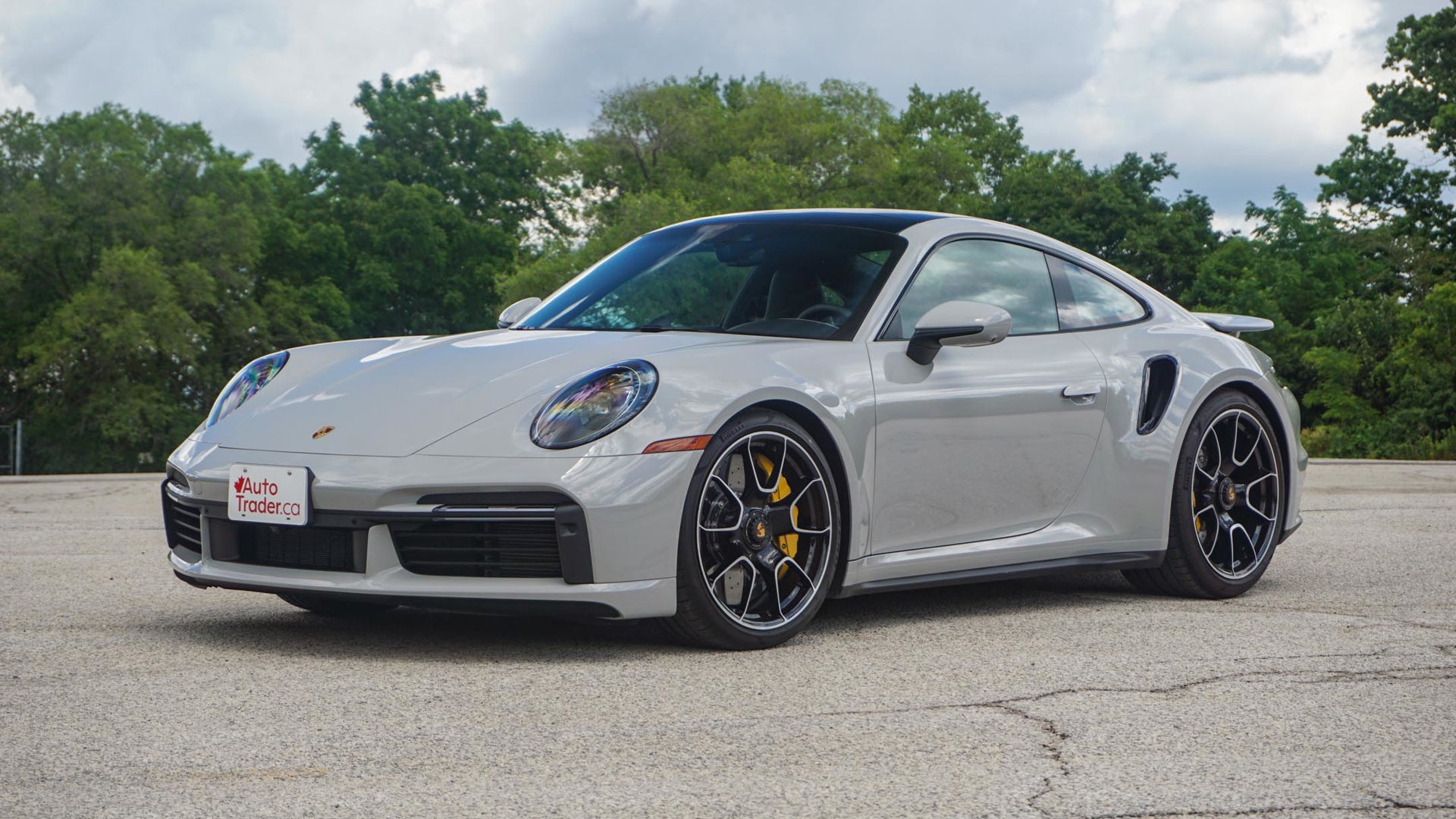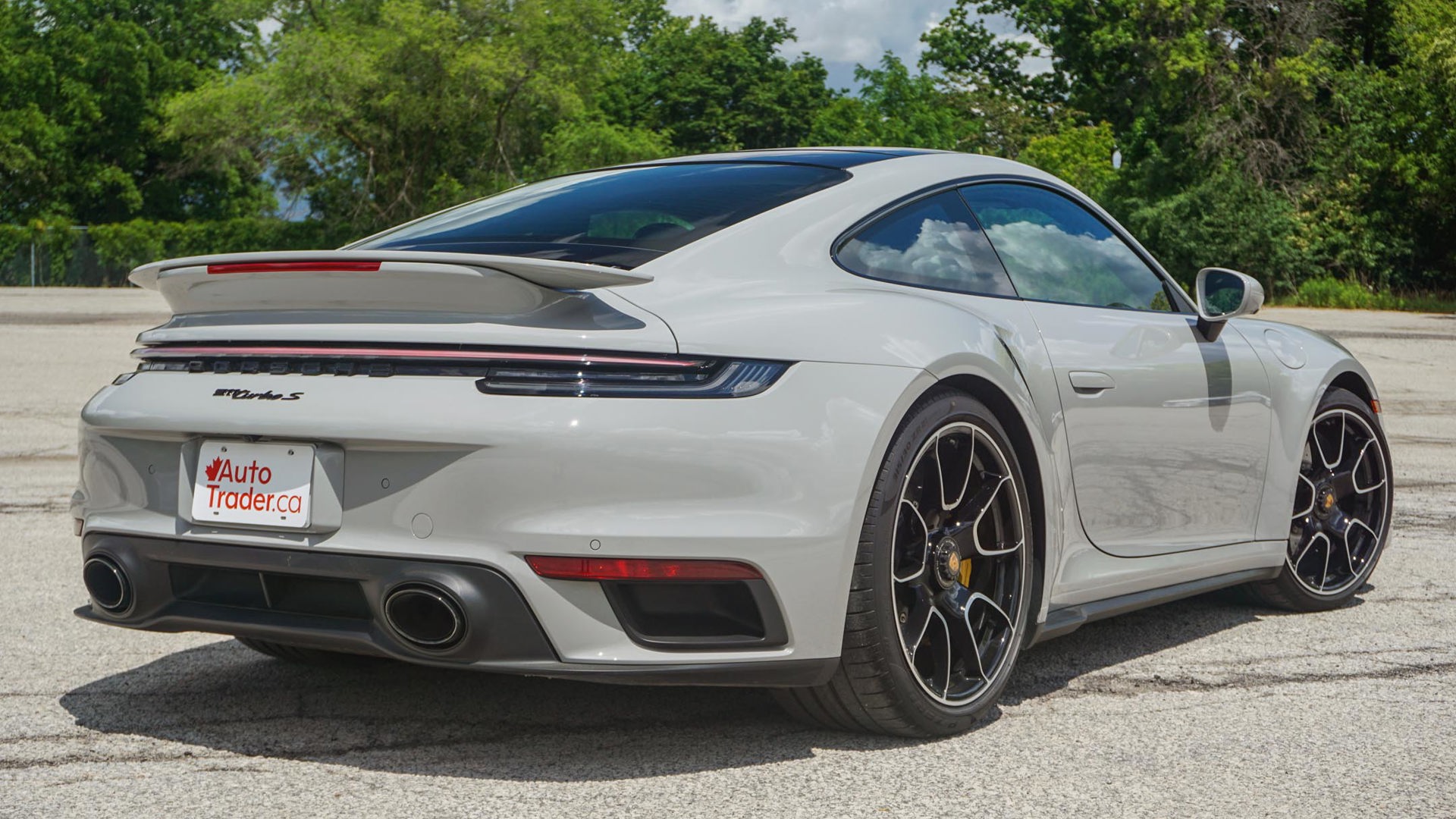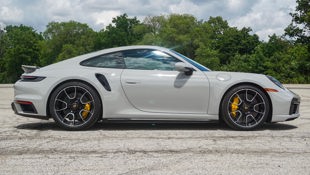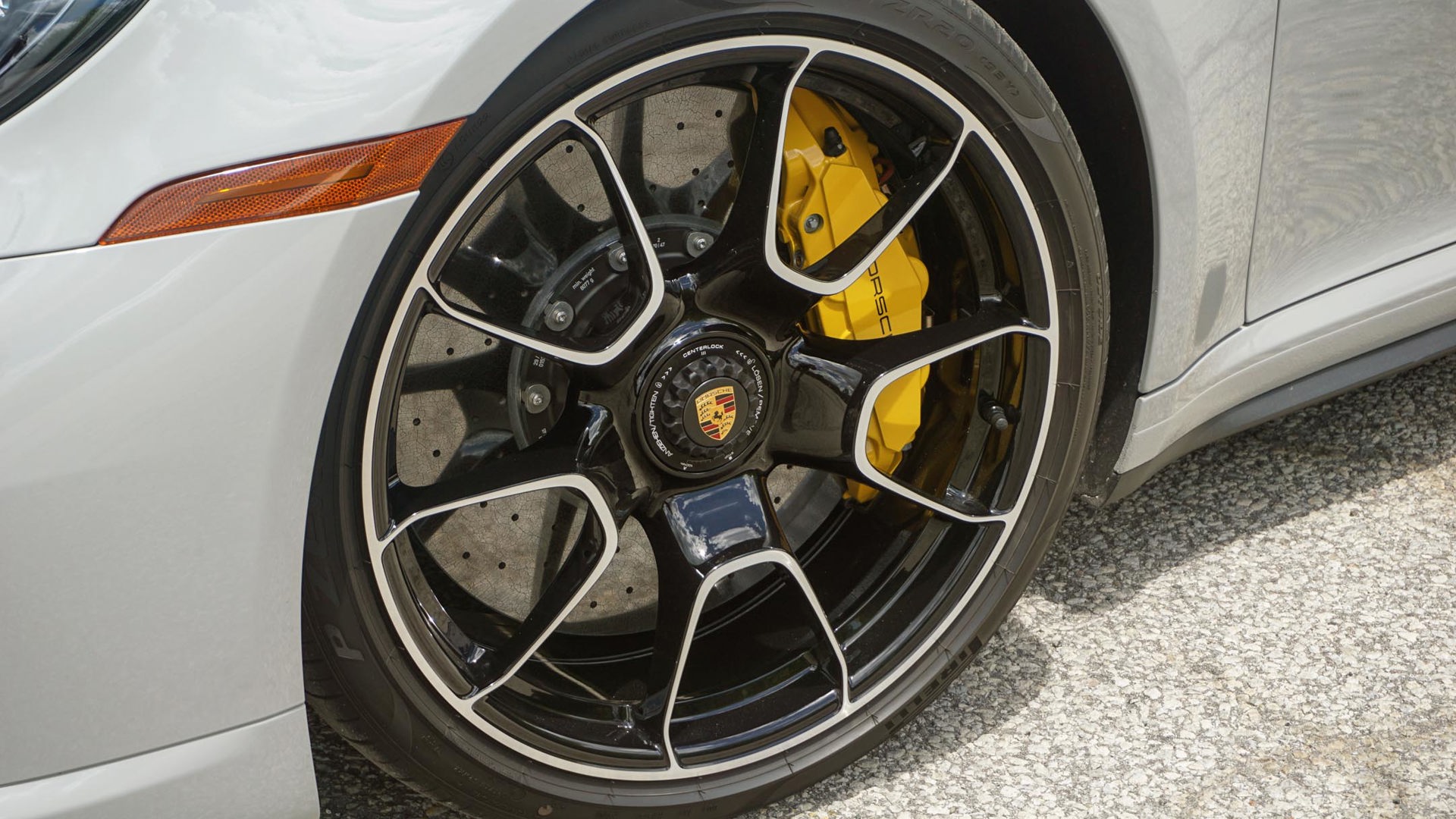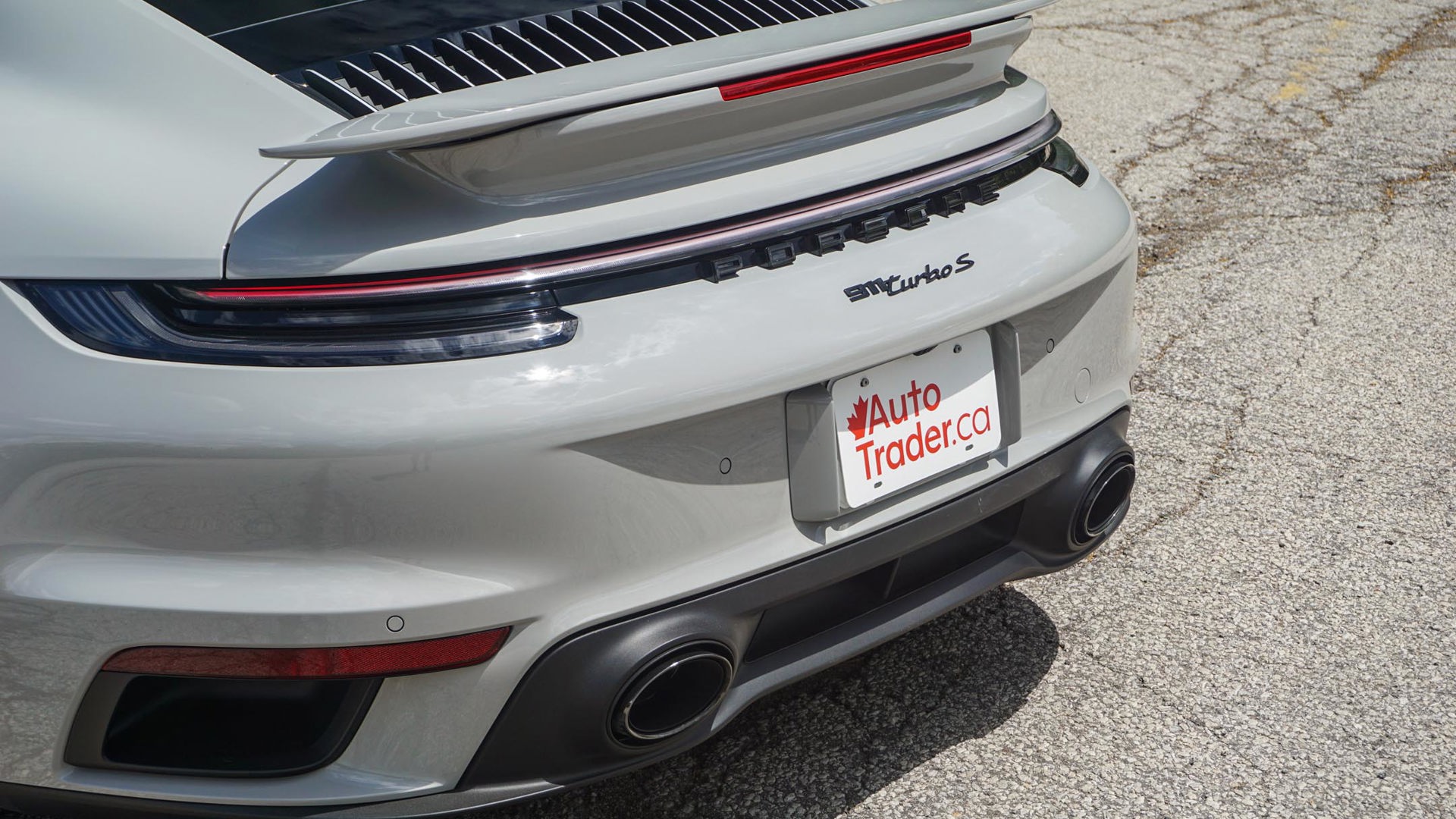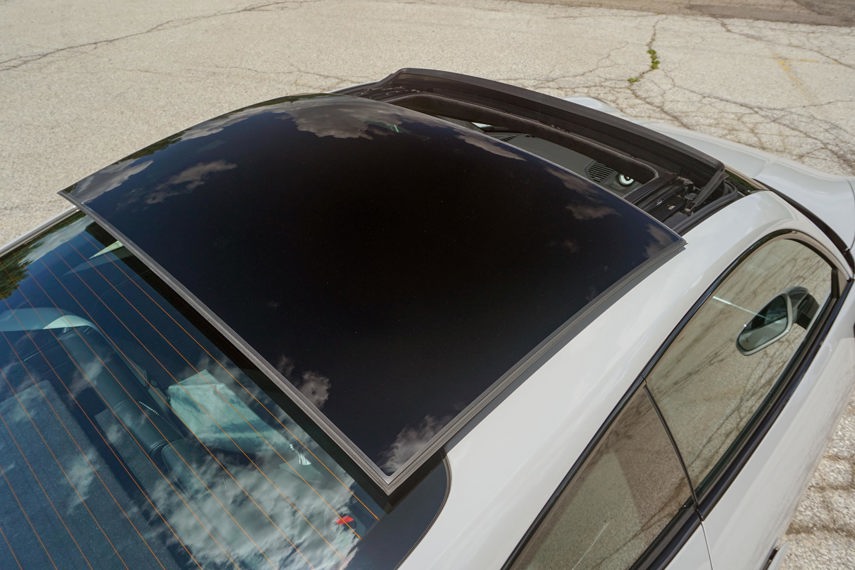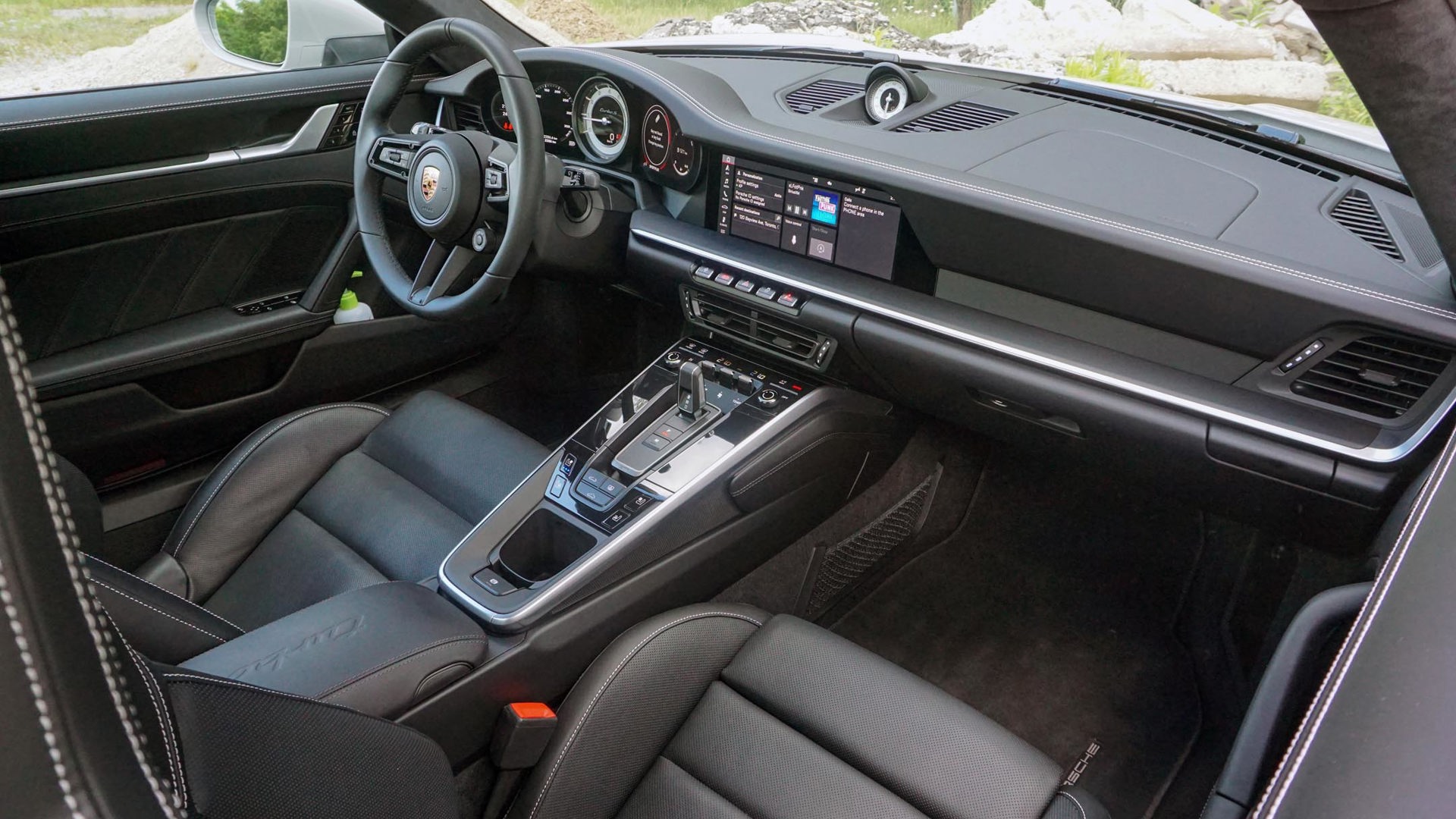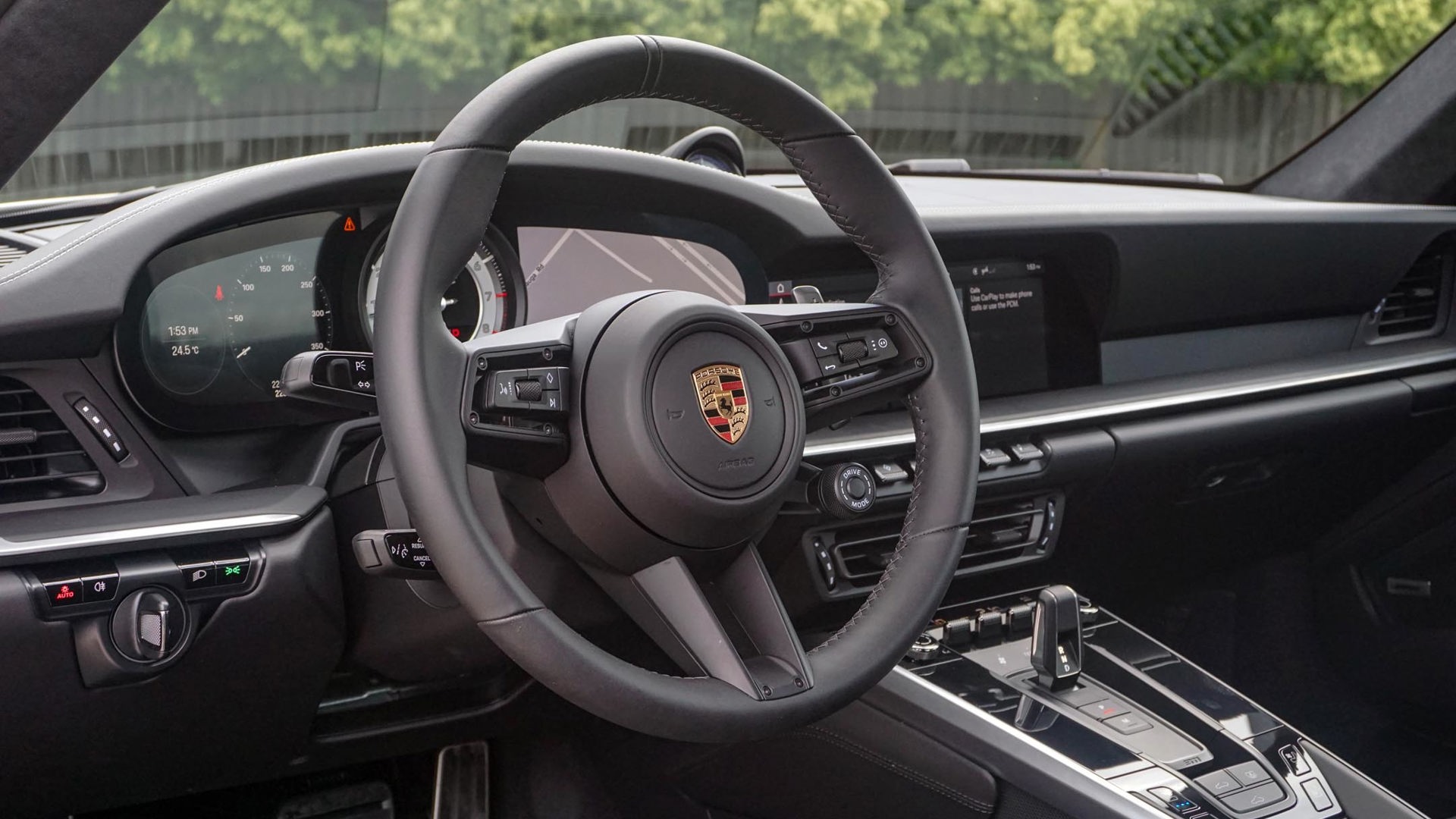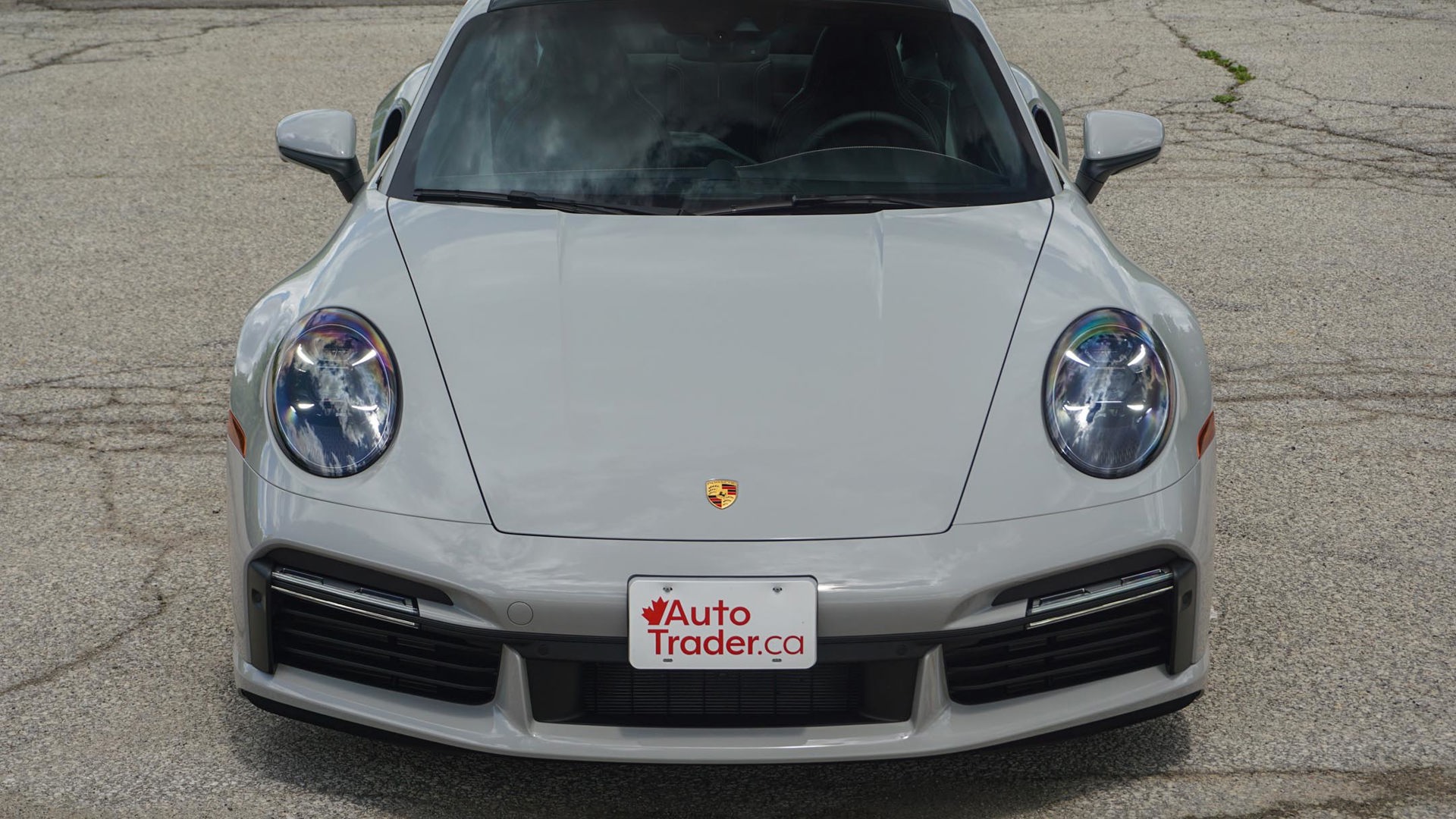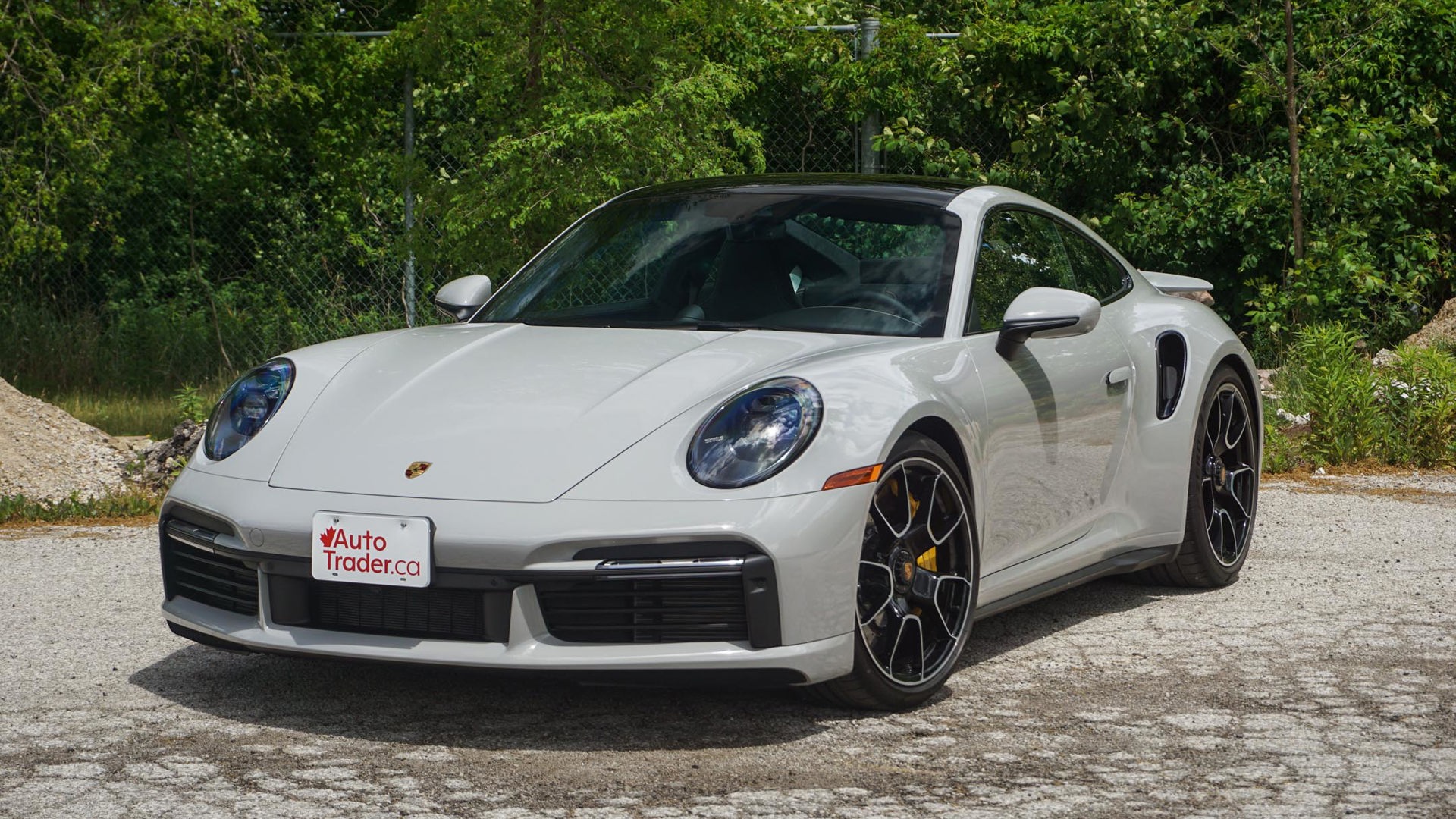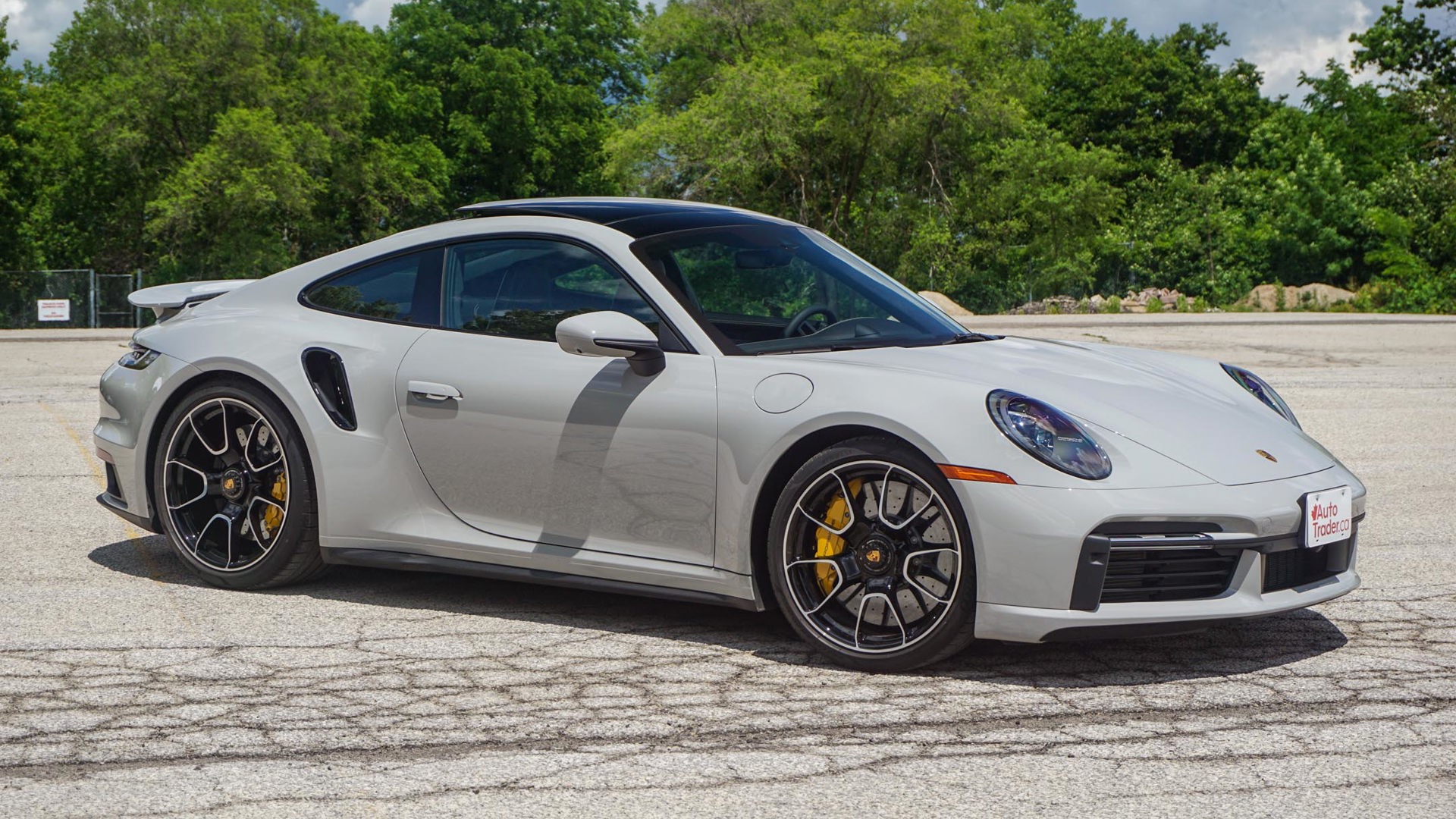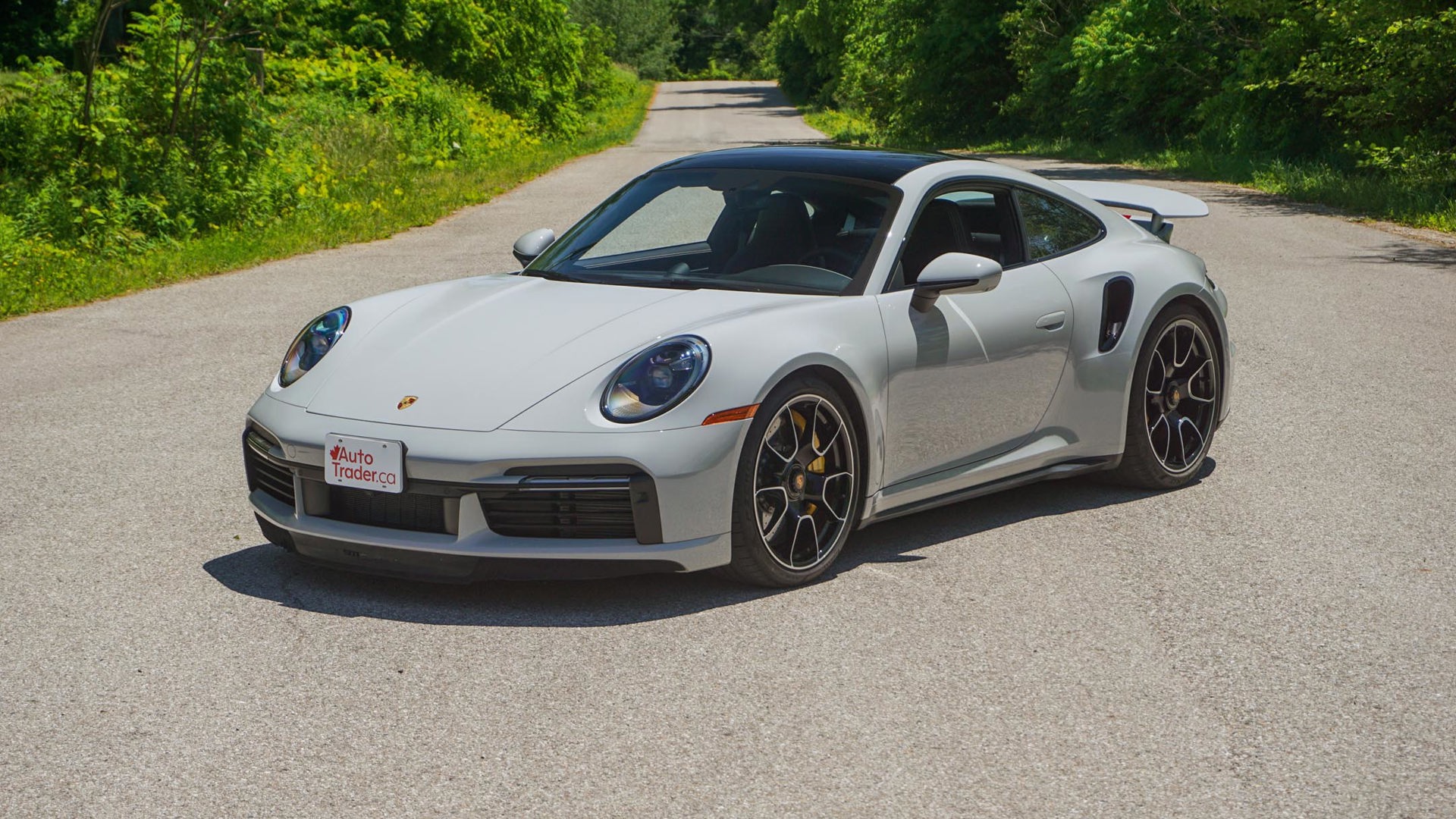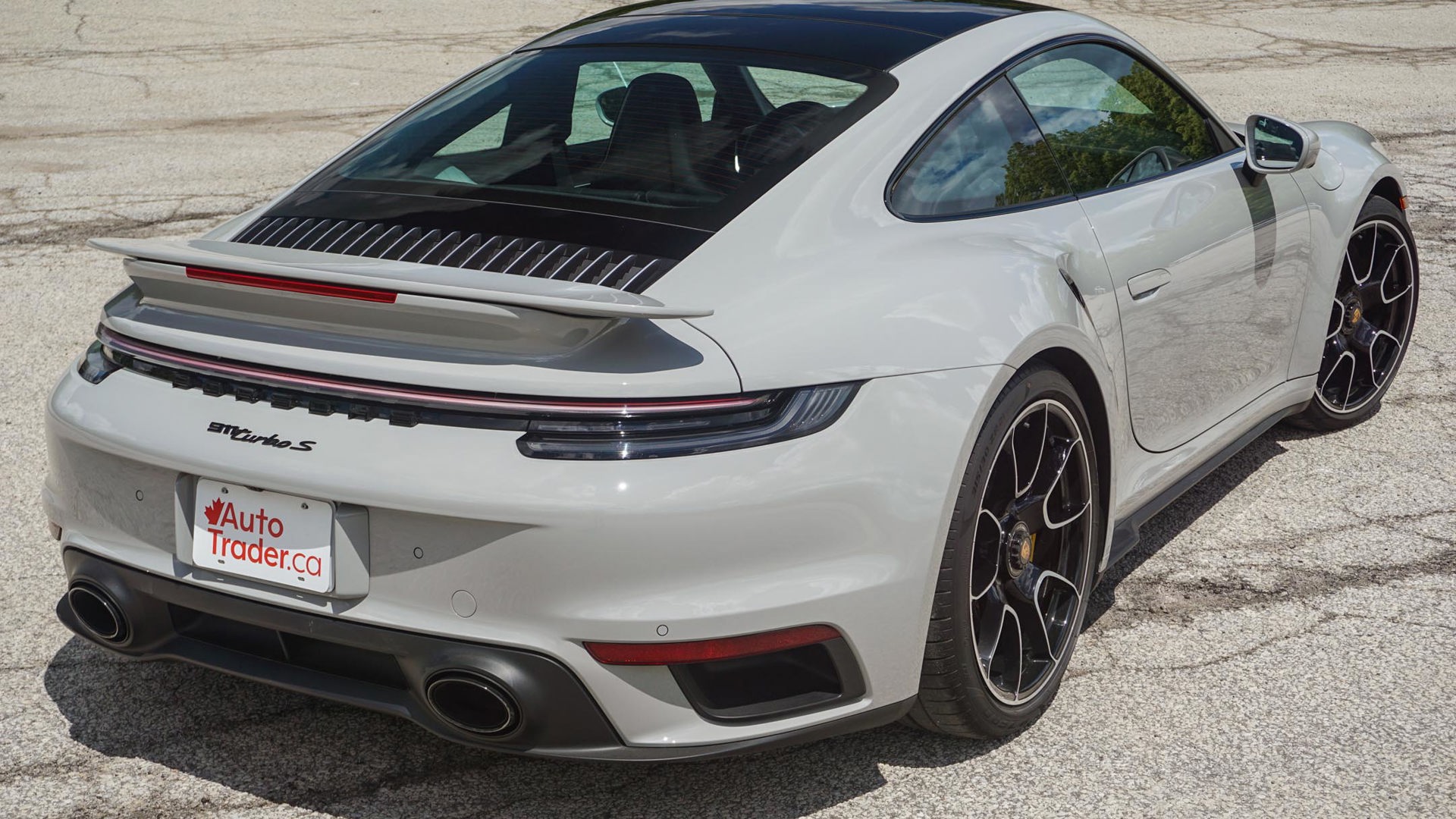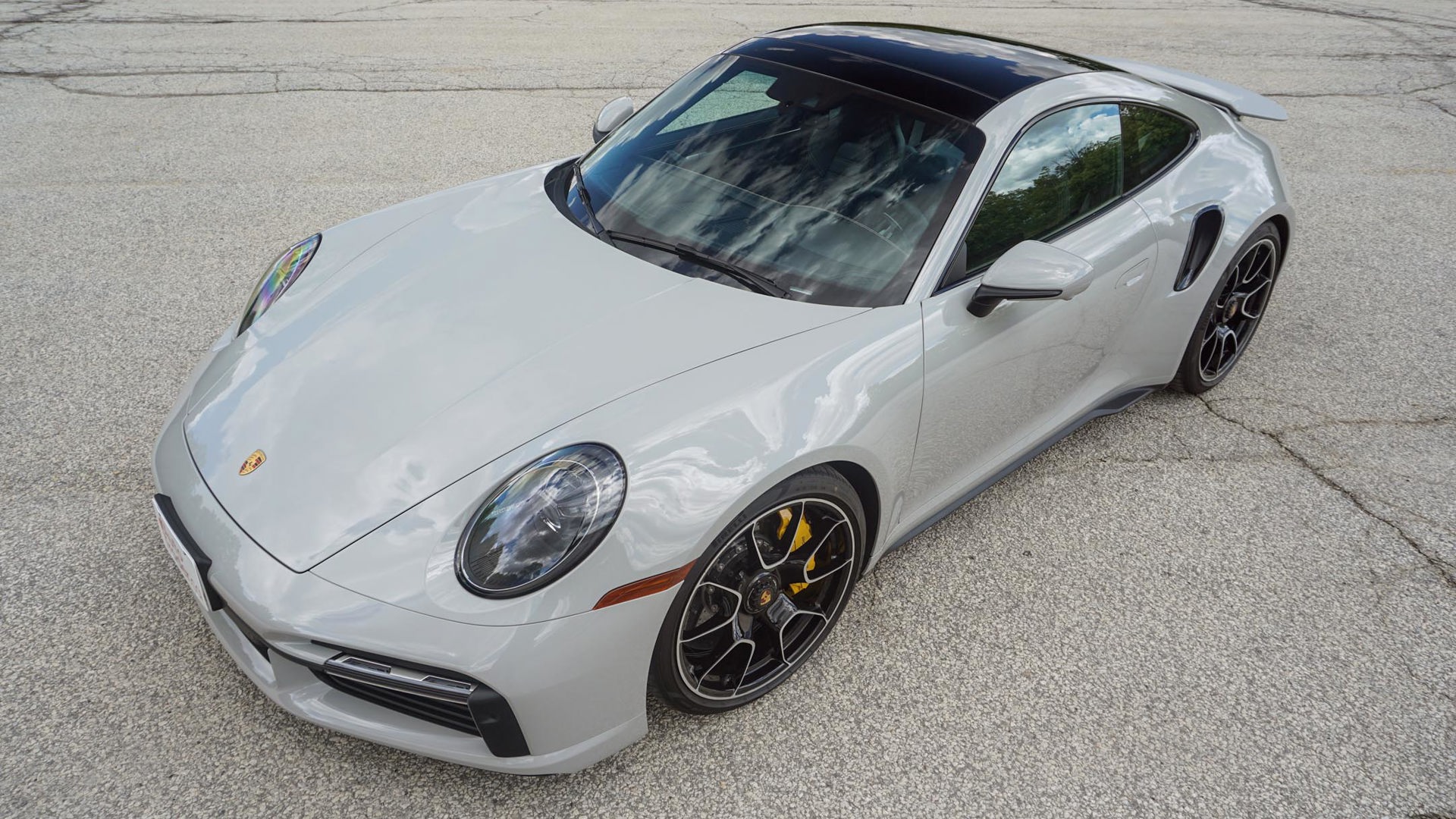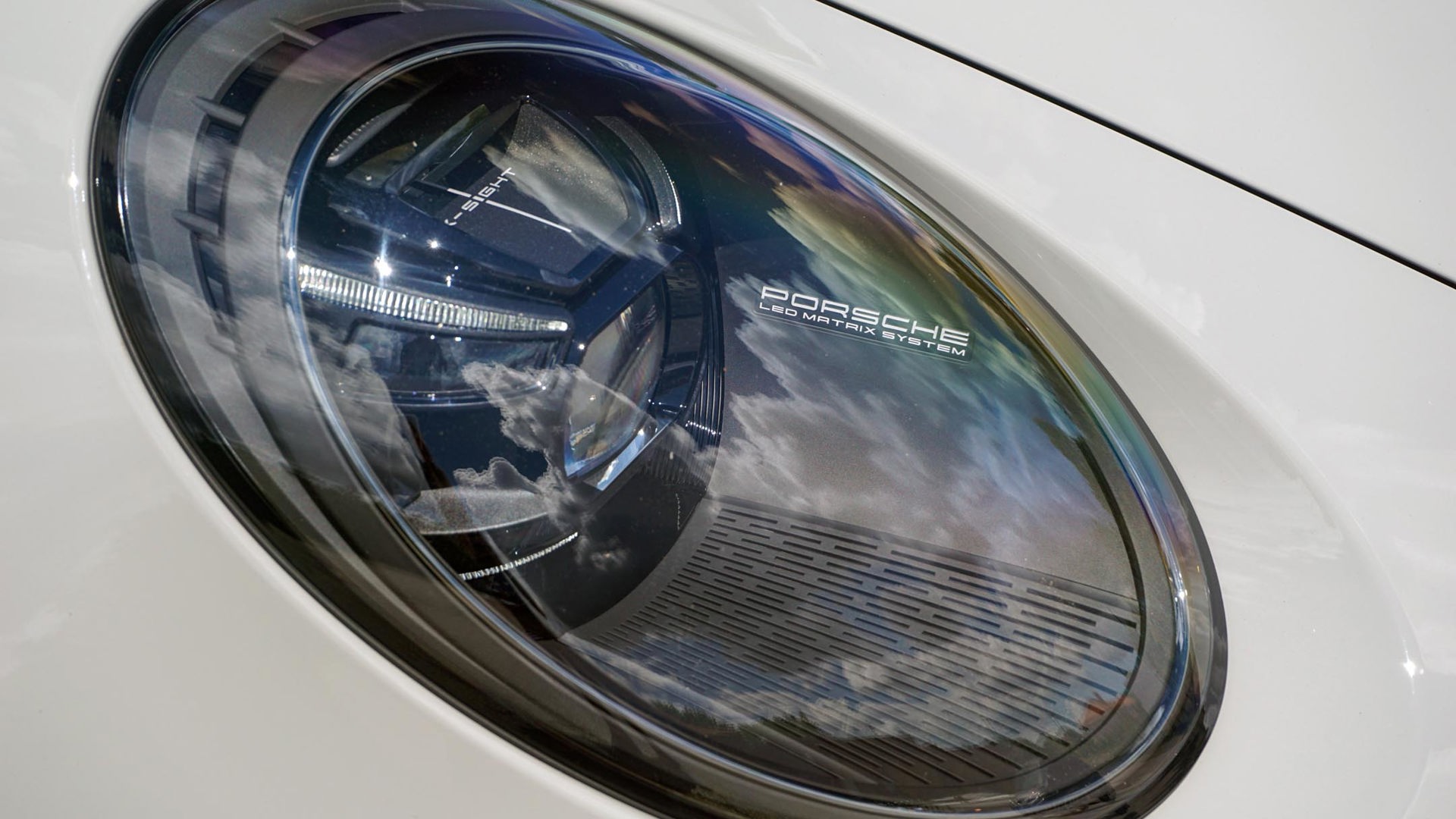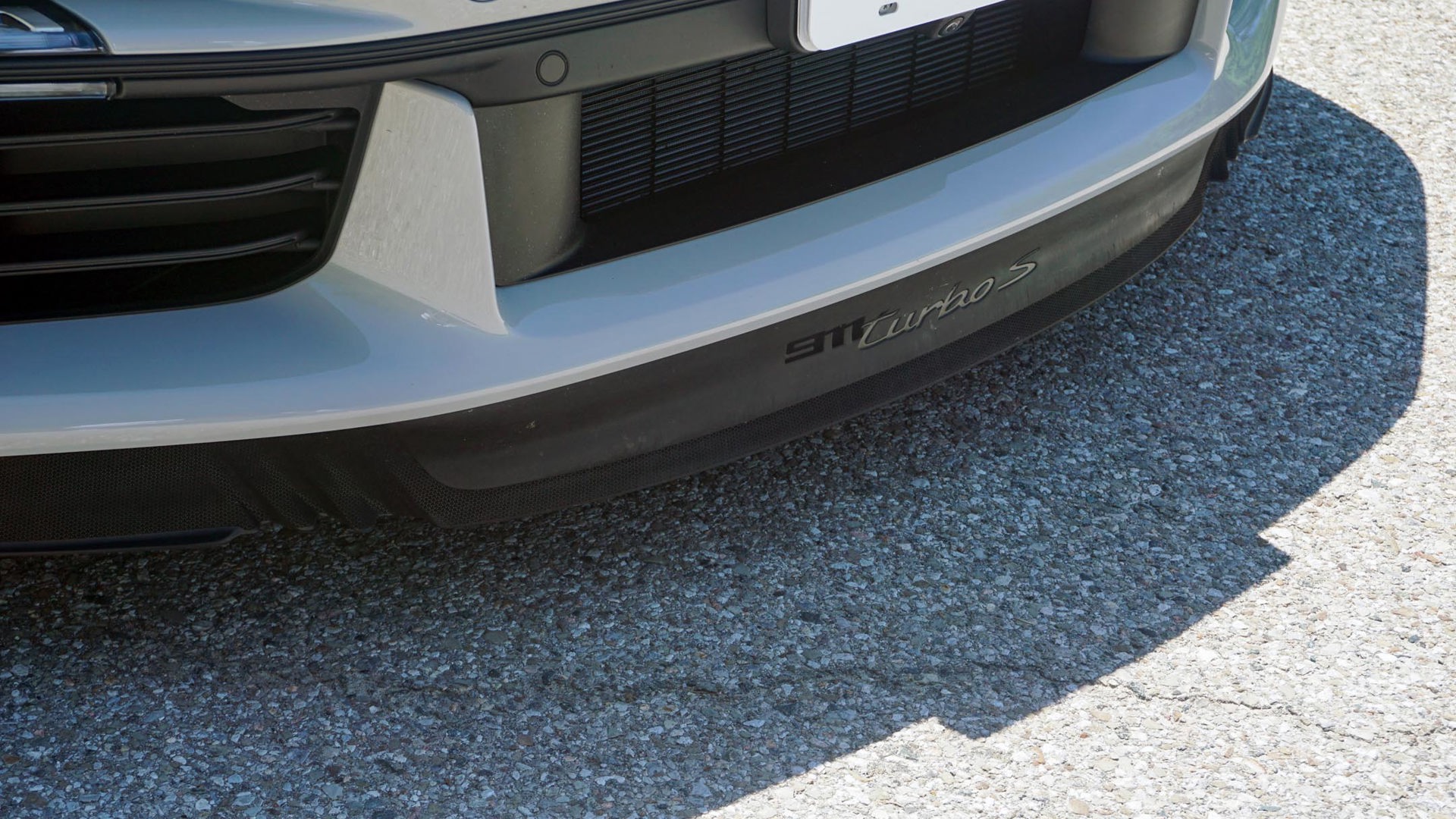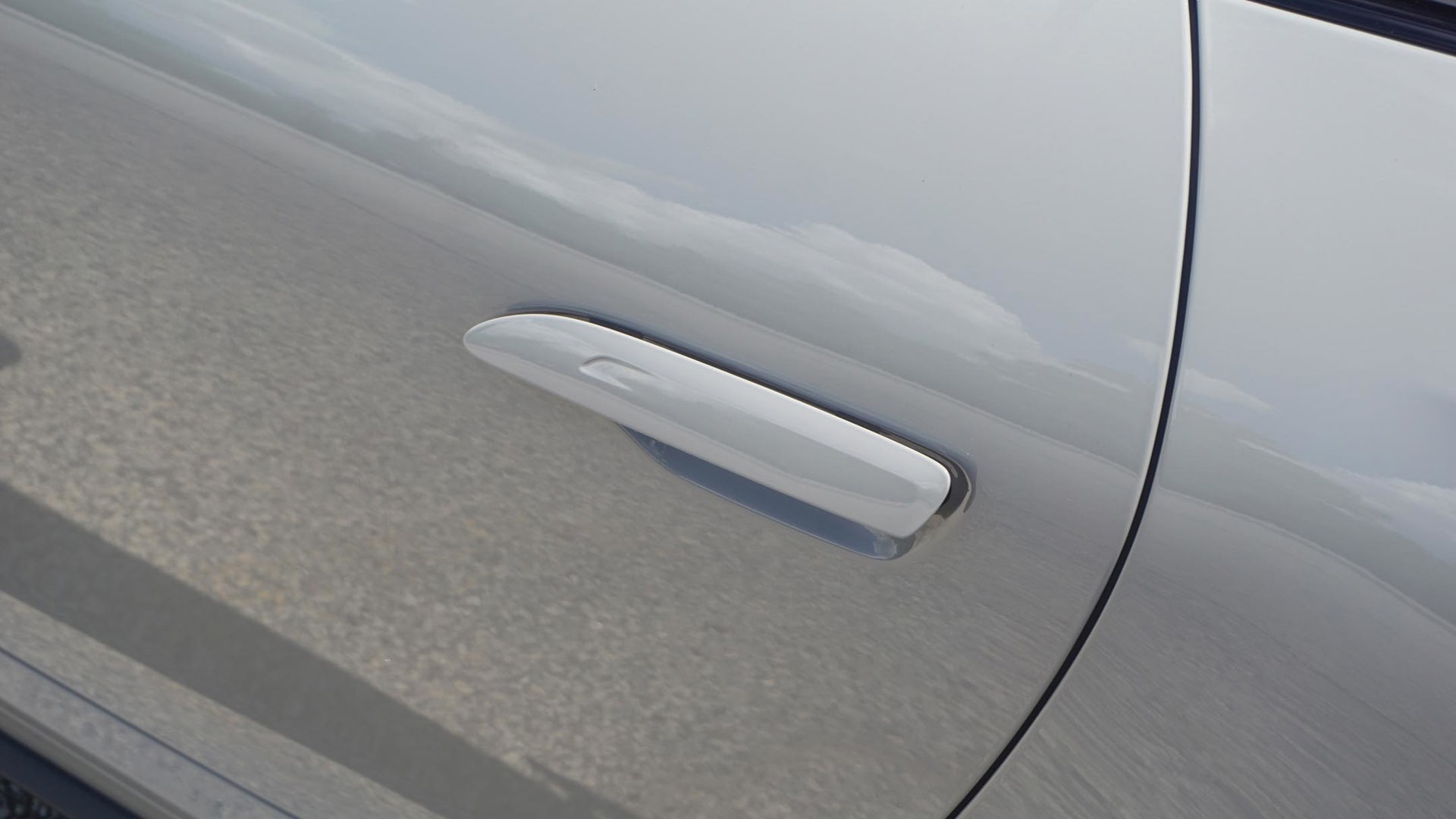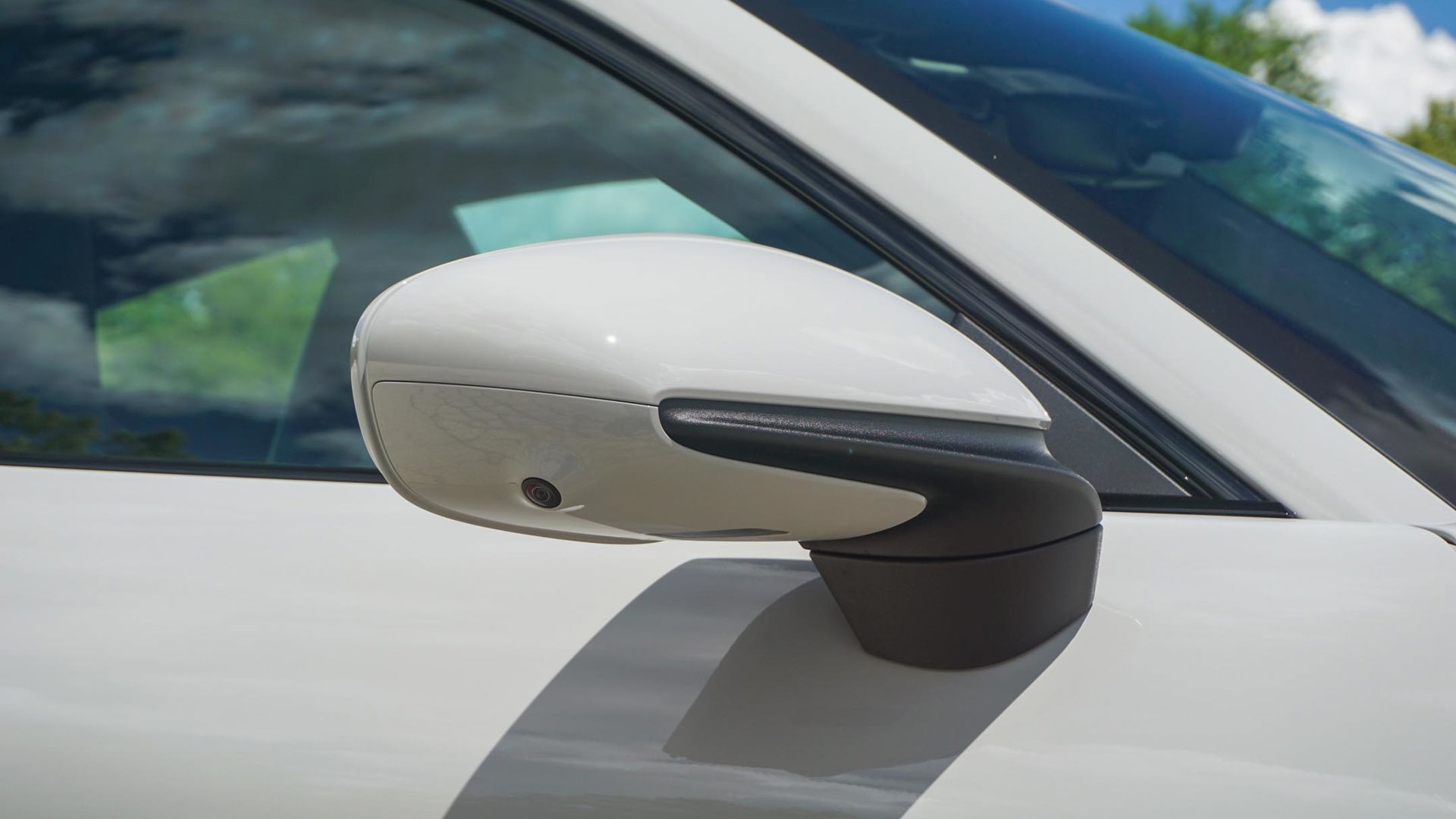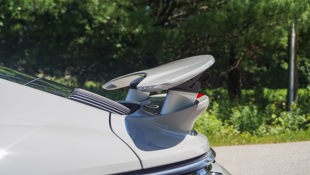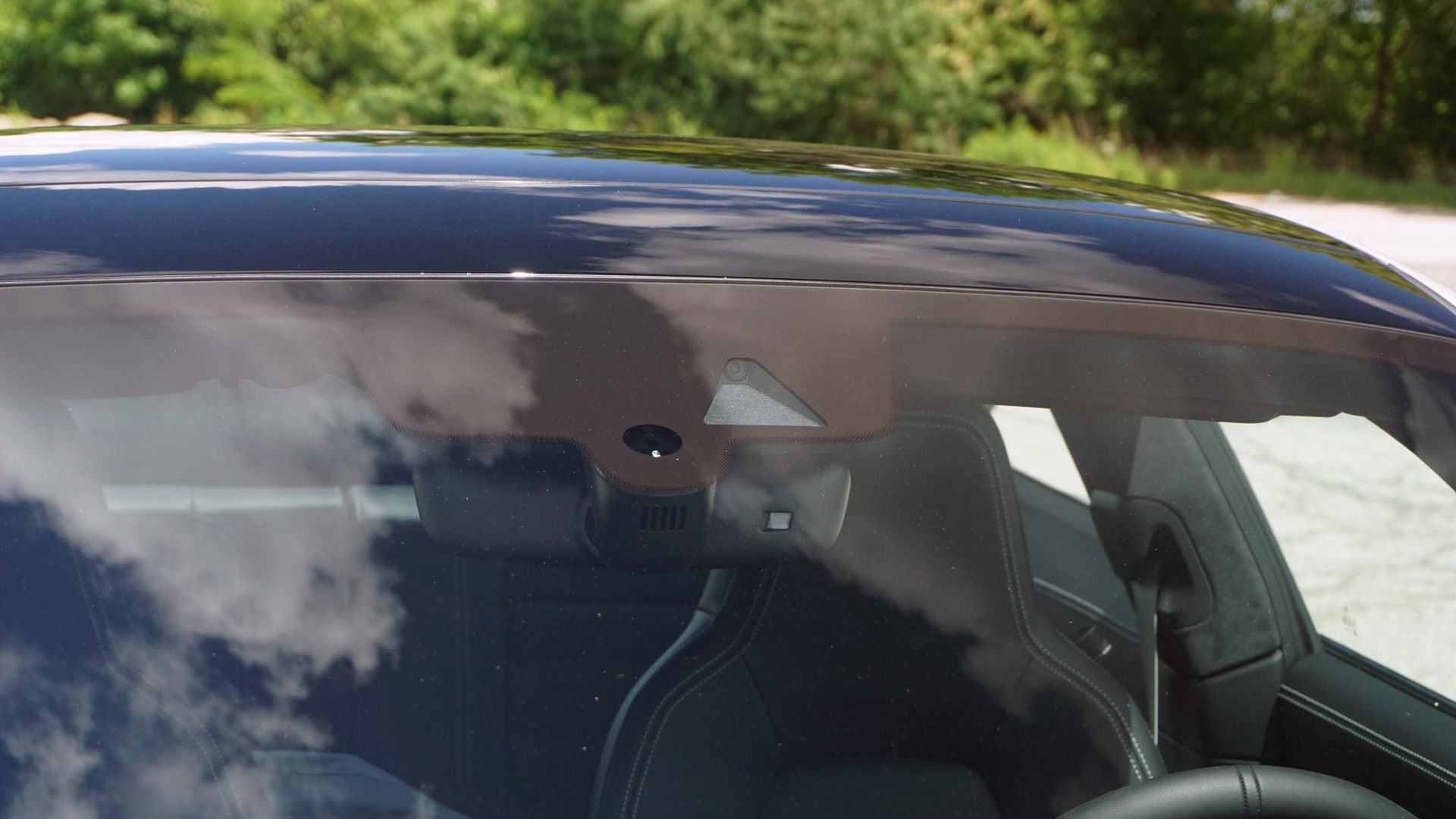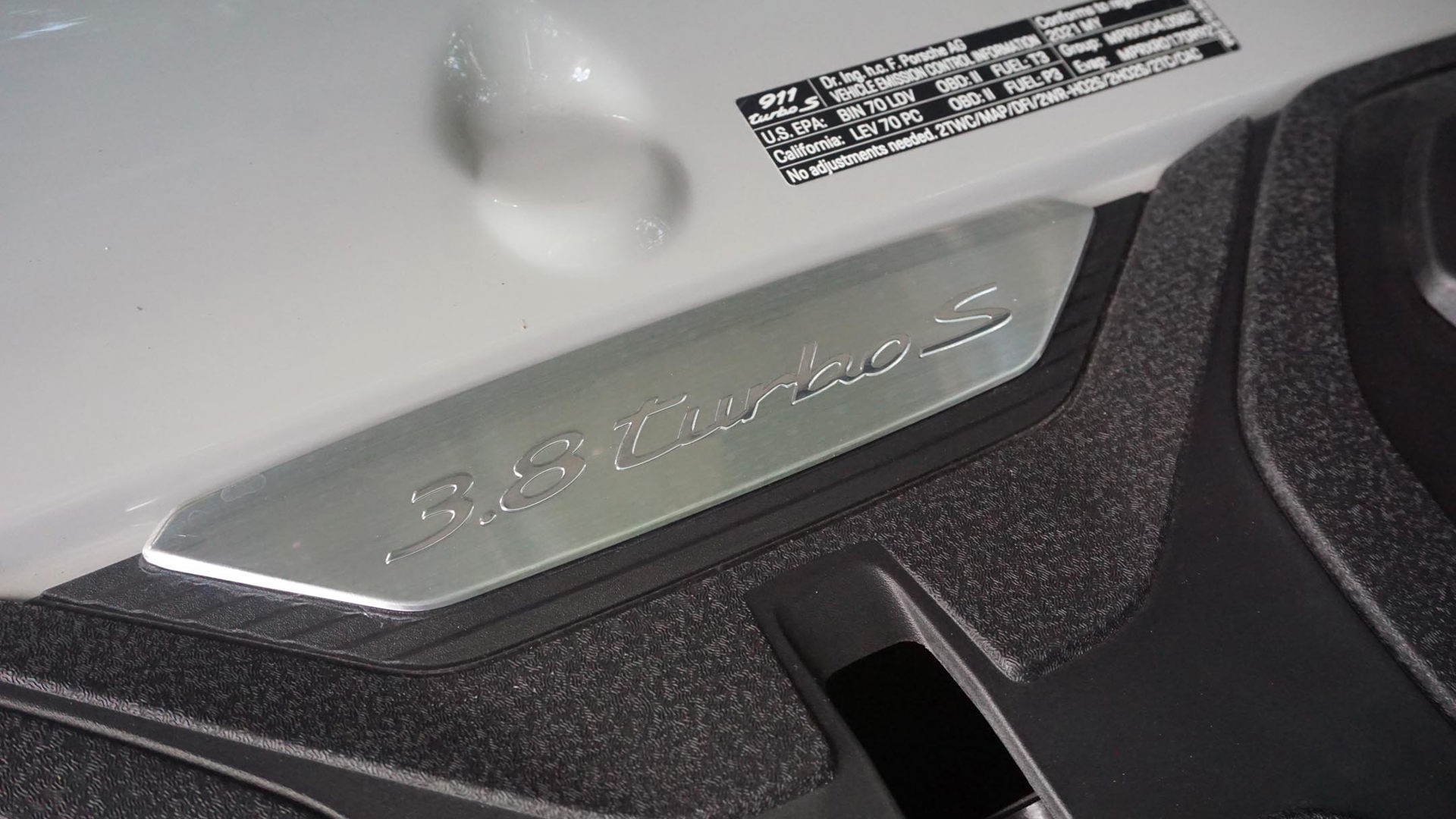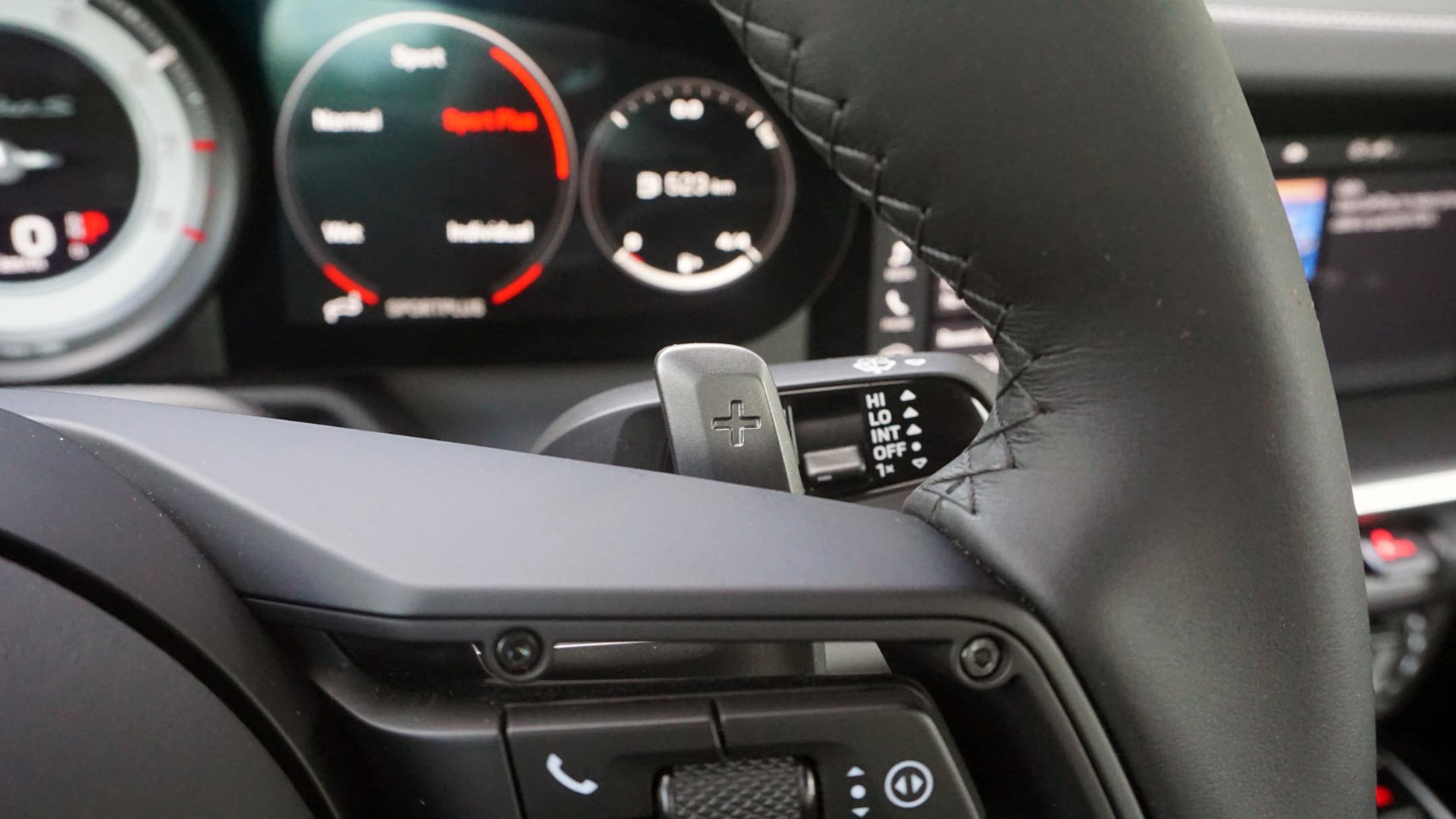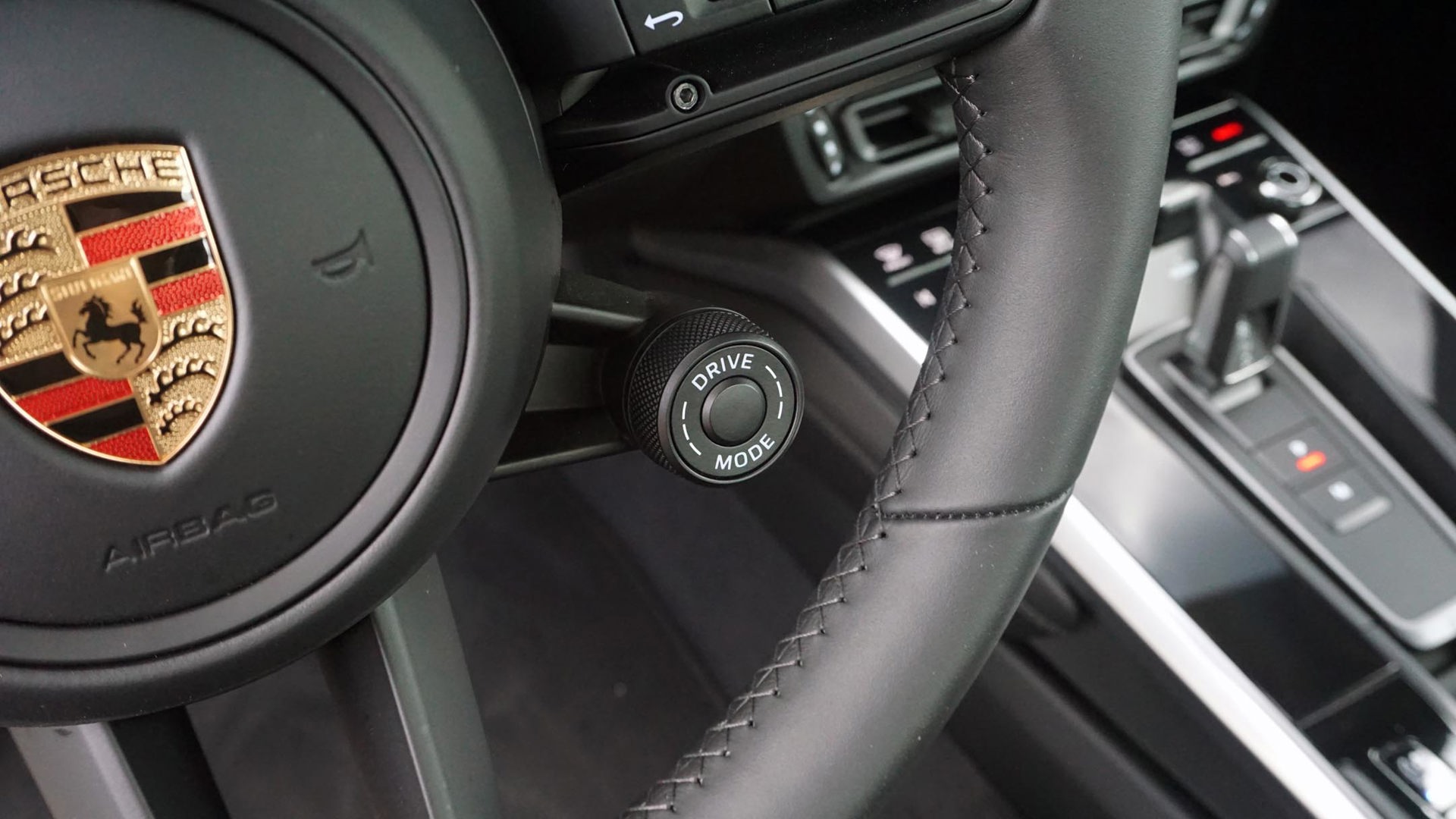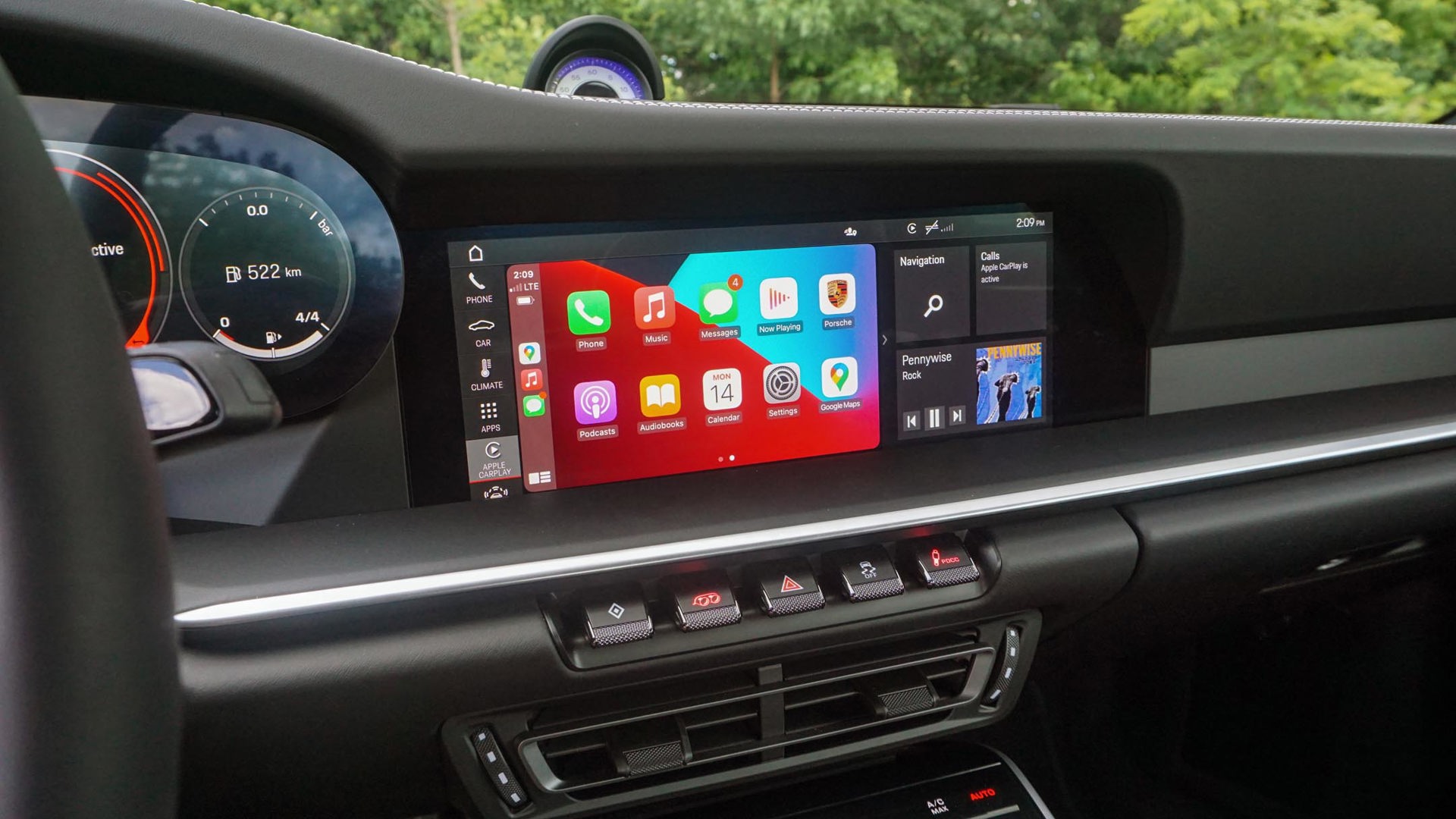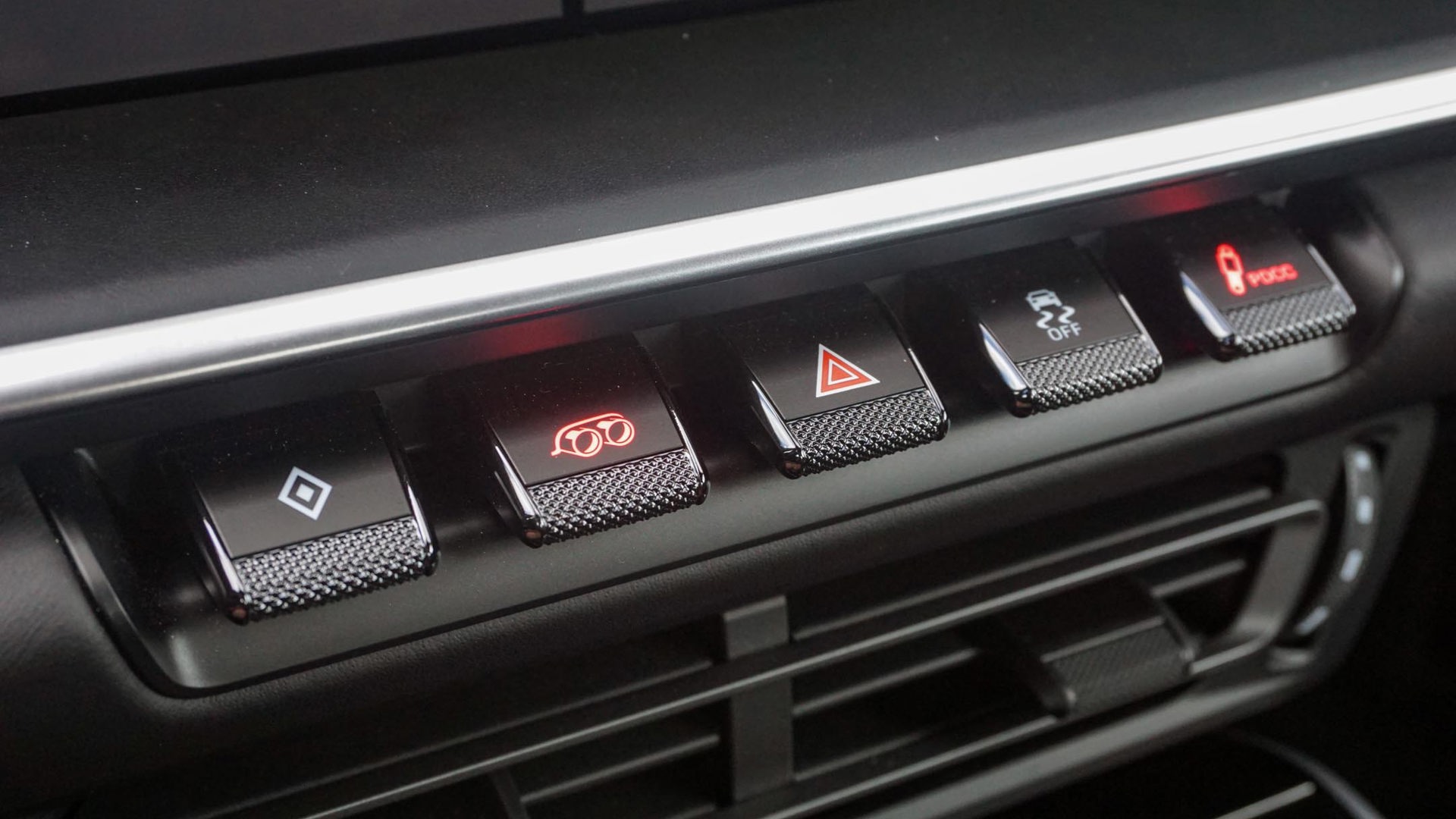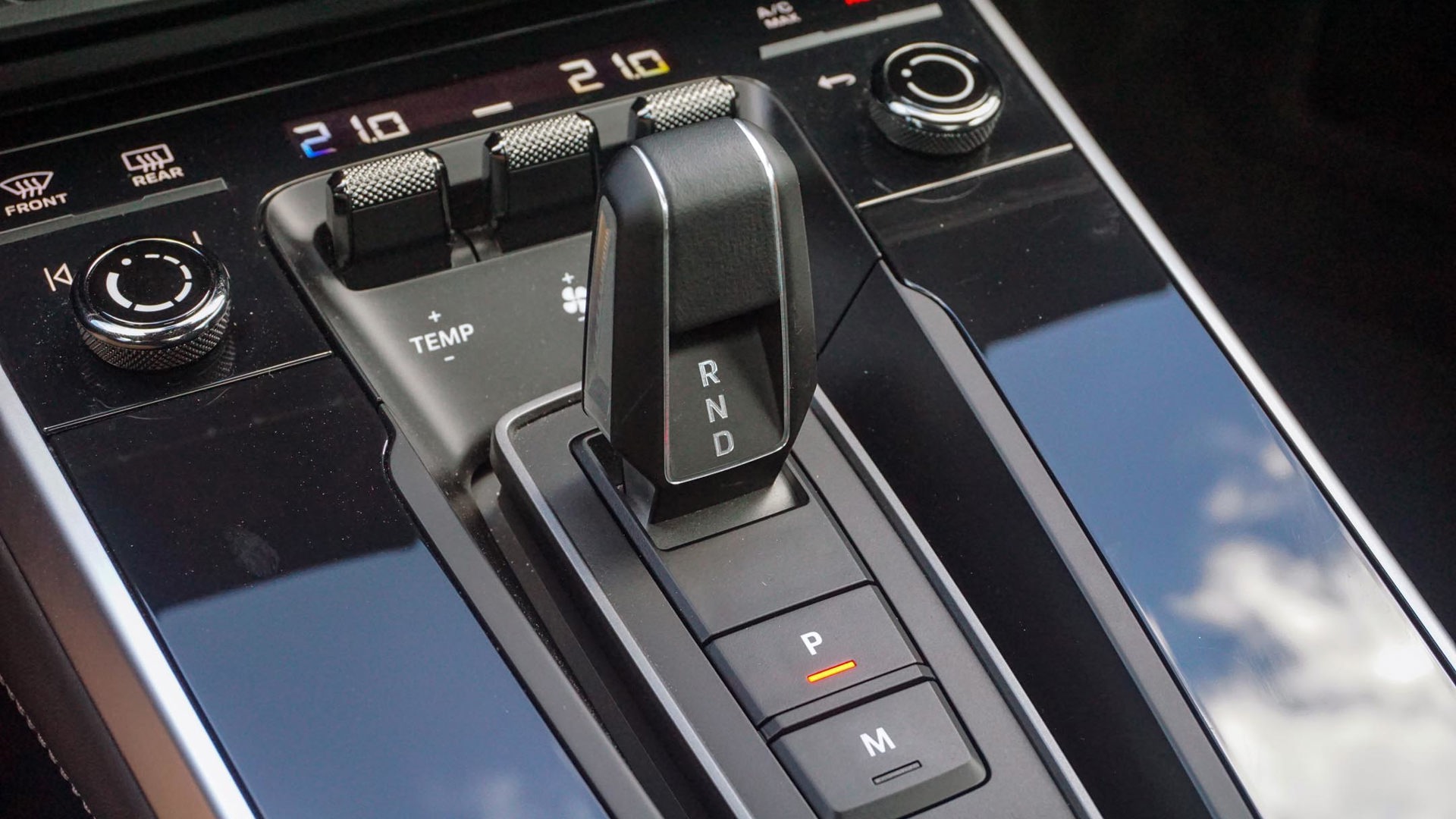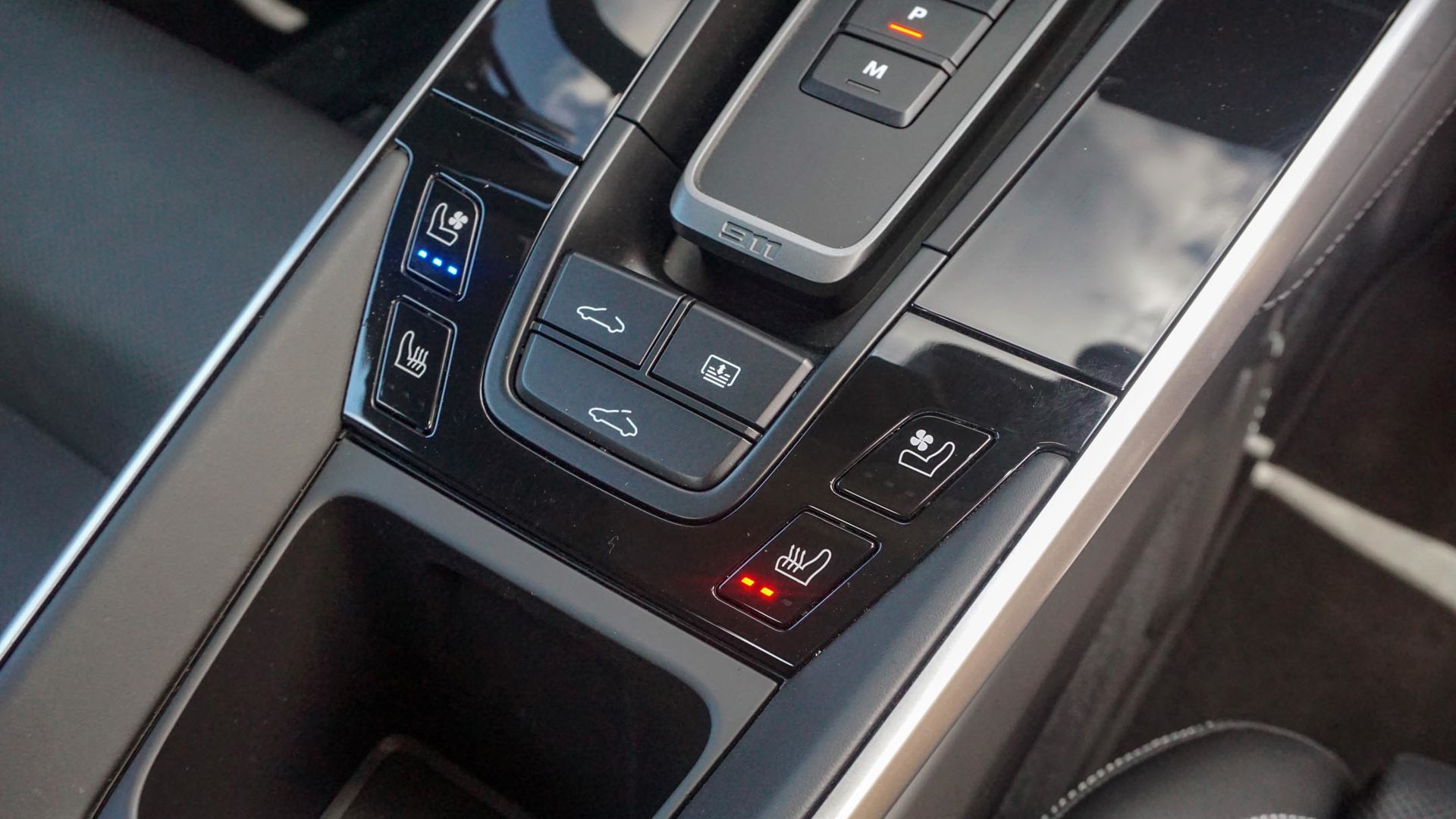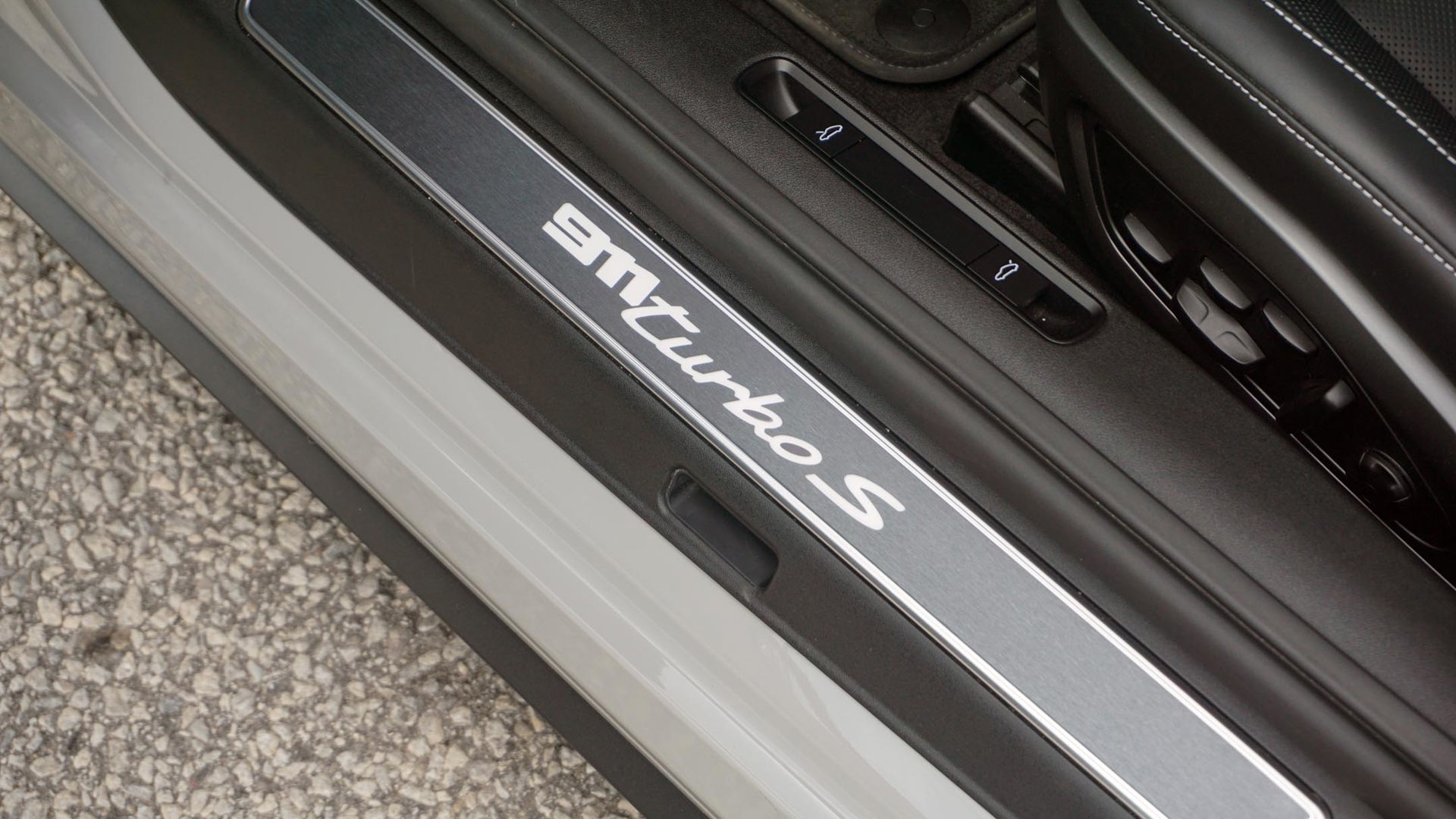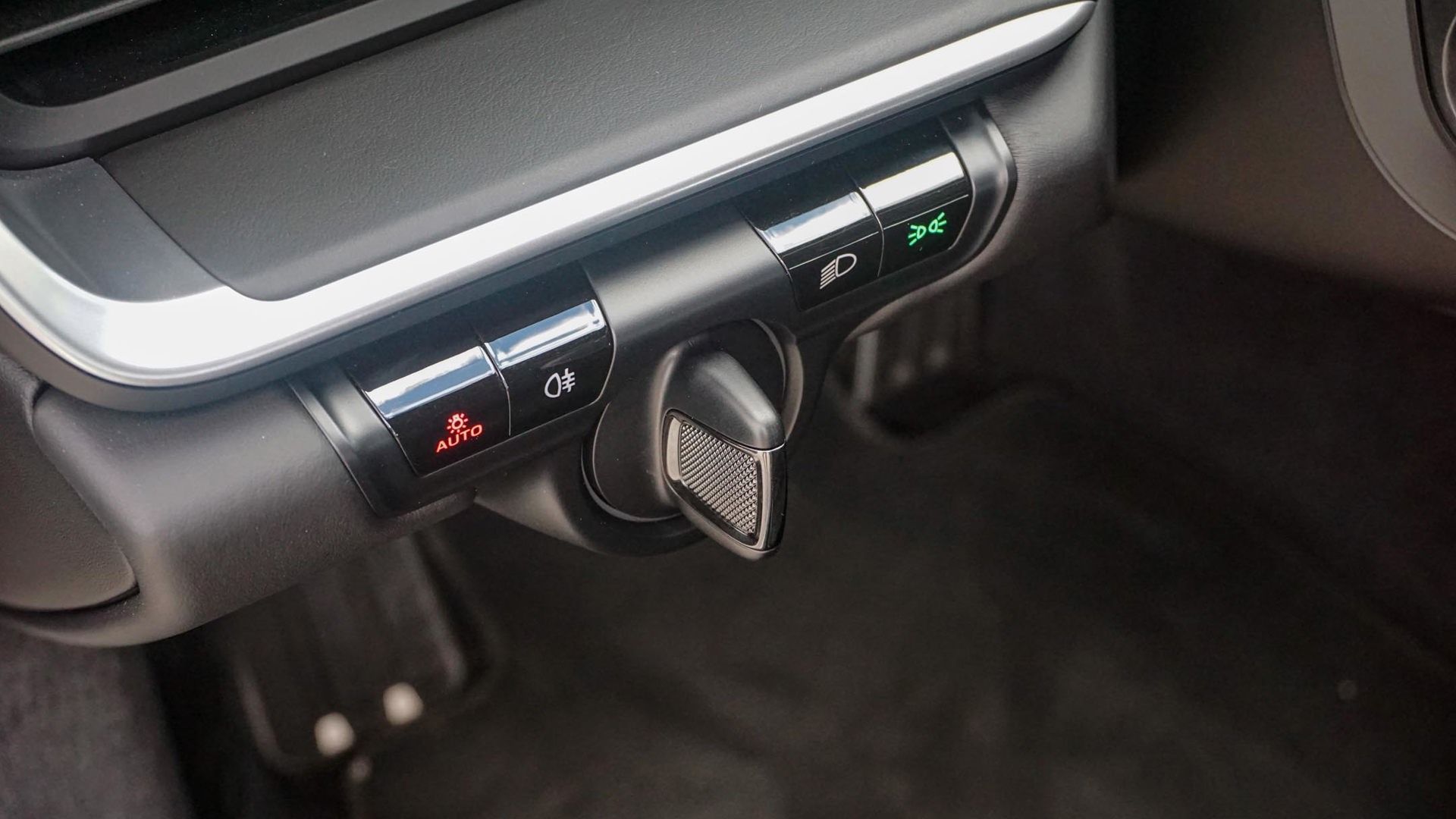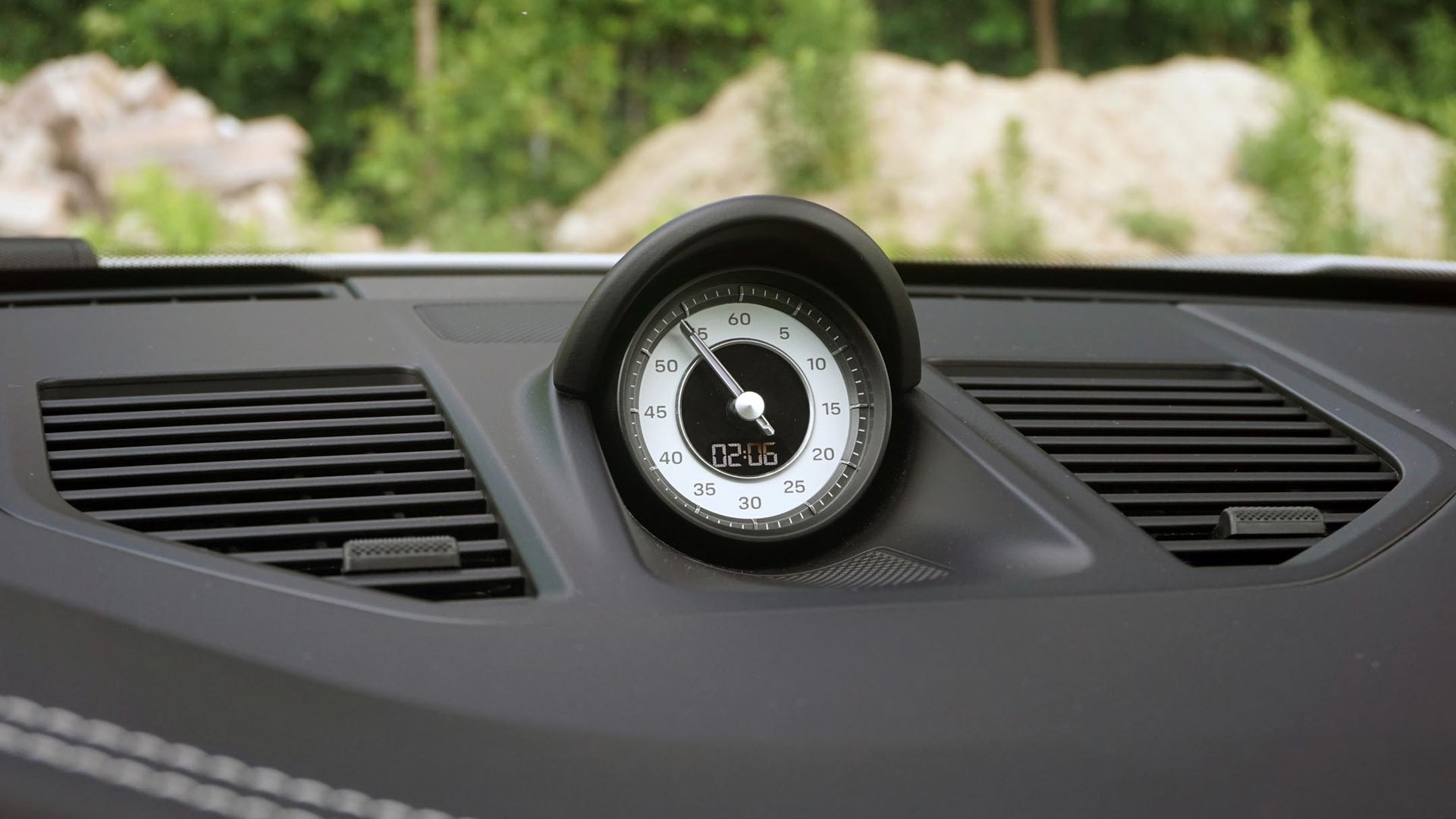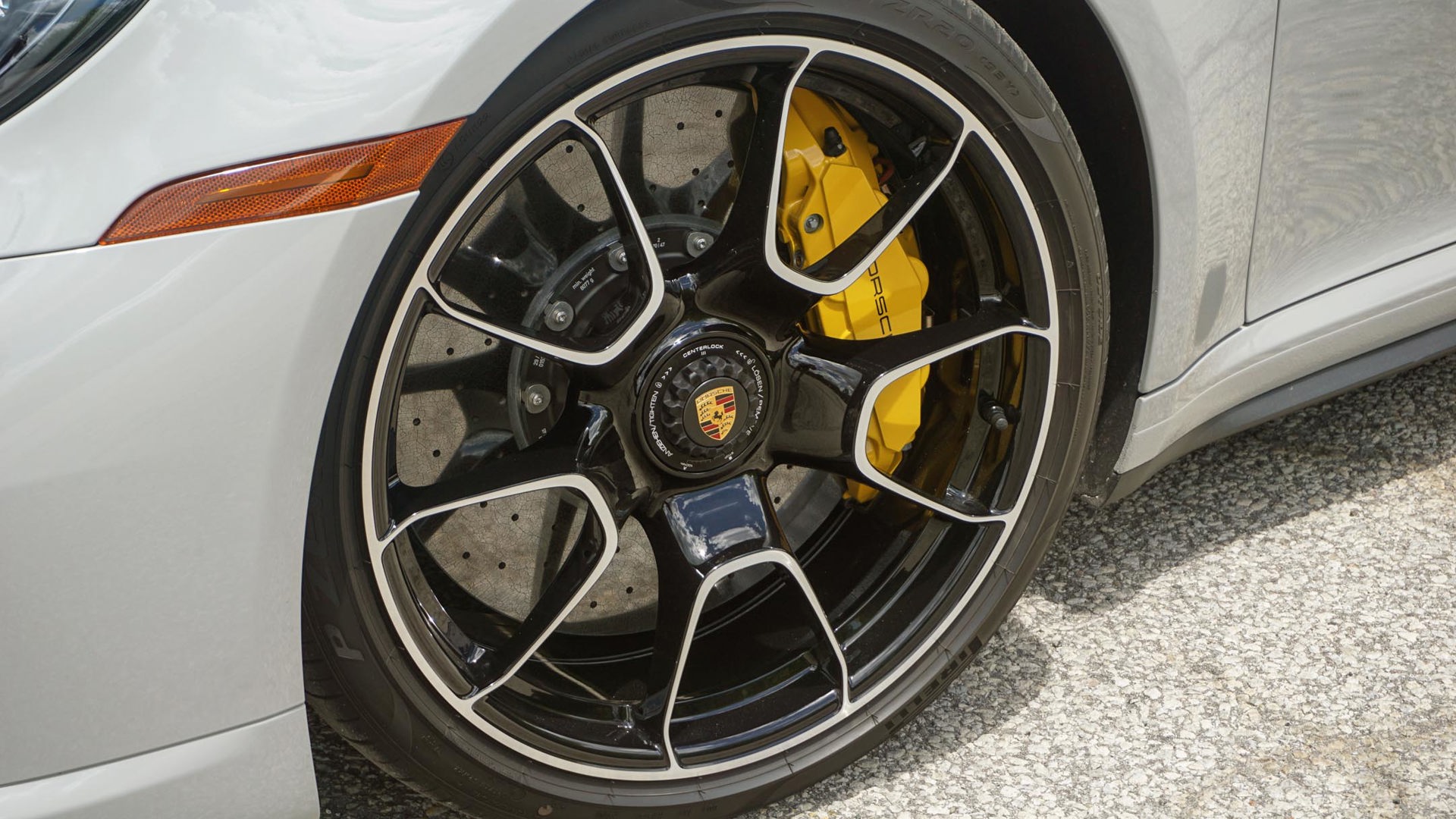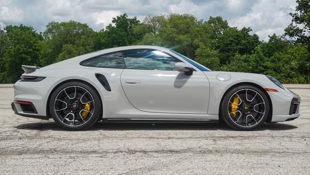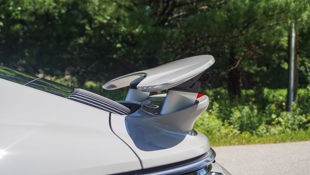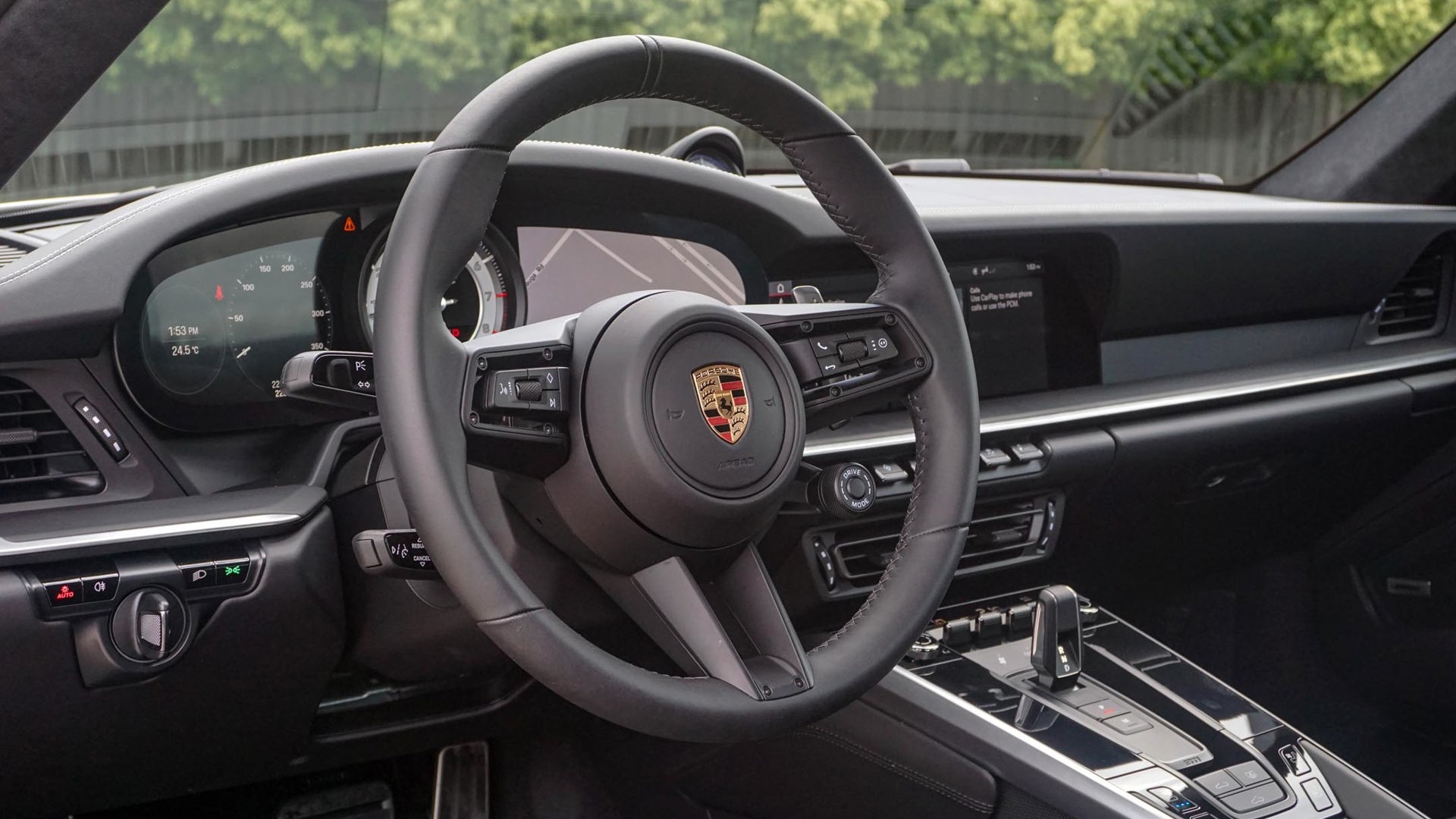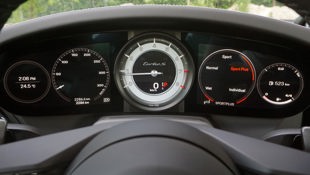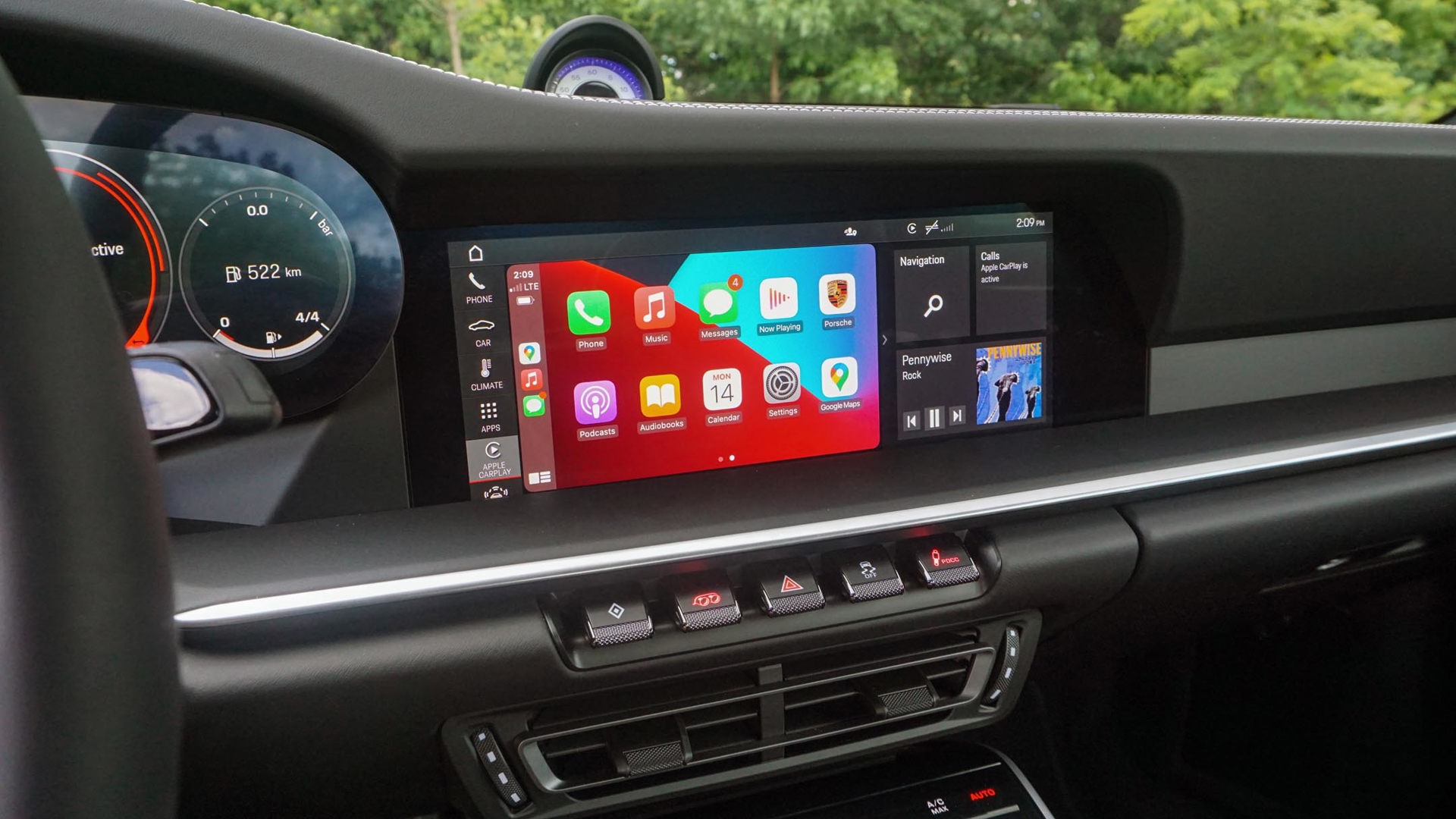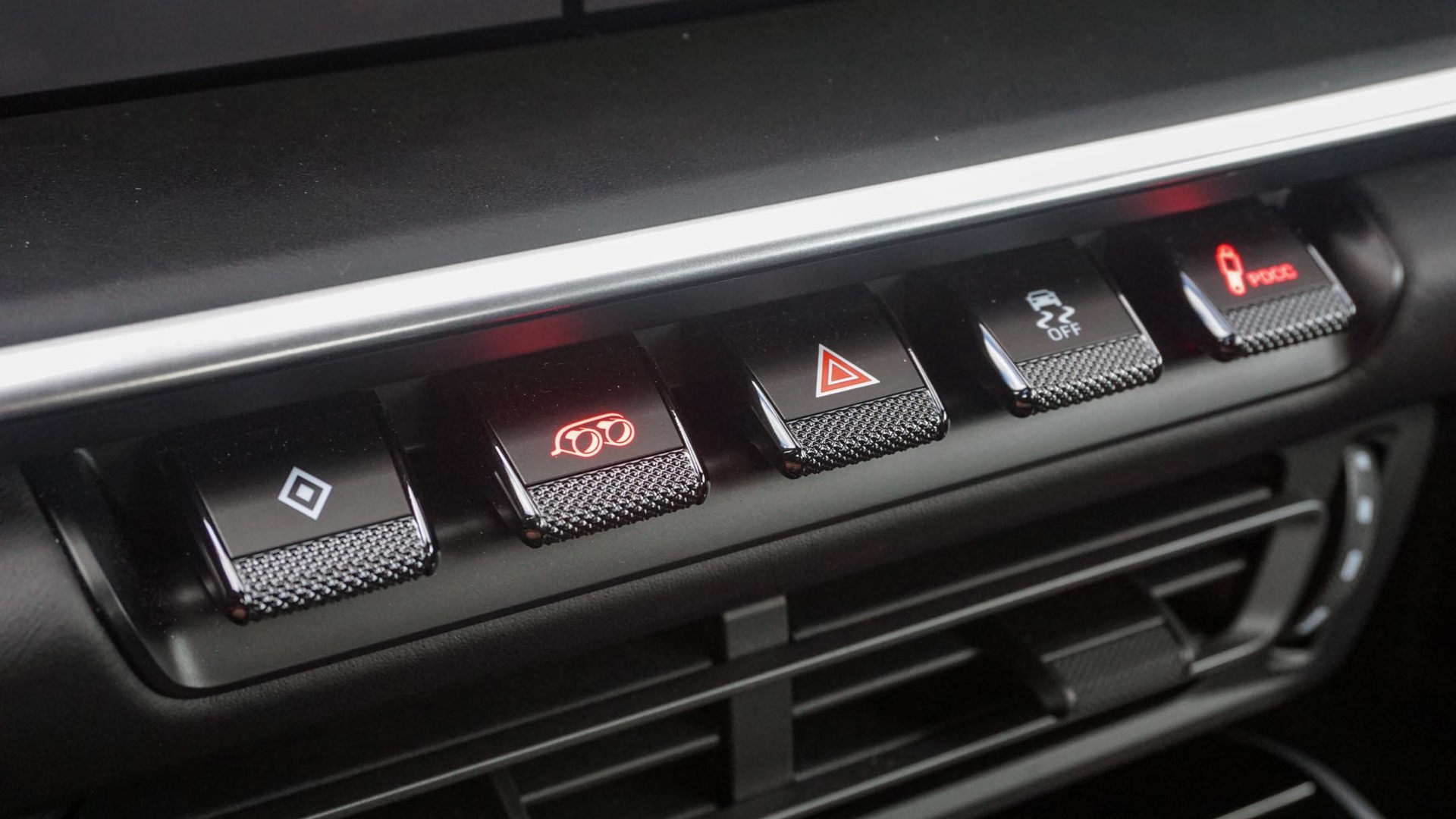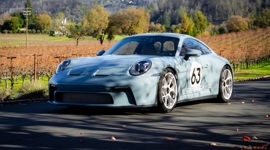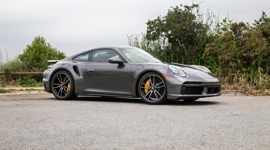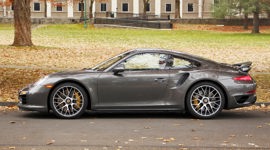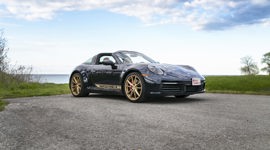 AutoTrader SCORE
AutoTrader SCORE
-
STYLING10/10
-
Safety9/10
-
PRACTICALITY9/10
-
USER-FRIENDLINESS9/10
-
FEATURES8/10
-
POWER10/10
-
COMFORT7/10
-
DRIVING FEEL10/10
-
FUEL ECONOMY6/10
-
VALUE9/10
There are good cars, there are great cars, and then there’s the 2021 Porsche 911 Turbo S.
This is a sports car – nay, a supercar – that seemingly defies the laws of physics on its way to world-beating performance. With some 640 hp on tap and sub-three-second sprints to 100 km/h coming with ease, the new Turbo S is a modern marvel of engineering that happens to be wrapped up in a familiar-looking package. It also manages to offer all kinds of engagement and genuine driving feel despite the layers of technology that make it such an incredible machine. Forget electrification – this is the pinnacle of Porsche performance.
Styling: 10/10
Though this car may sport wide rear haunches, gaping fender vents, and a functional aero kit, it’s still a 911 through and through. That made its ability to turn heads everywhere it roamed something of a surprise – not that 911s are exactly a dime a dozen, but they’re fairly ordinary by exotic standards, not to mention they’ve looked mostly the same for decades now.
Even so, whether it was this tester’s subtle grey paint finish, the yellow brake calipers tucked behind the outstanding staggered wheels, or those signature styling elements (or all of the above), it garnered all kinds of attention from Porsche fans and laypeople alike during a week-long test.
Power: 10/10
Surely the sounds it makes courtesy the rear-mounted engine and upgraded sport exhaust contributed to the cause, with plenty of that sweet metallic twang Porsche’s flat-sixes are famous for. The motor is all-new in this 992 version of the Turbo S, with its foundation coming from the Carrera’s twin-turbocharged 3.0L. It’s been bored out nearly three quarters of a litre more – Porsche has rounded up to 3.8L in the name of tradition – while the turbos bolted to it are bigger than before, spin in opposite directions of each other, use variable vanes to increase exhaust flow, and work symmetrically rather than sequentially.
There’s some other new tech here, too, but the results are the important part; try 640 hp and 590 lb-ft of torque – increases of 68 hp and 74 lb-ft of torque over its predecessor. Not only are those numbers silly but they’re achieved so seamlessly, with no semblance of anything close to turbo lag.
Driving Feel: 10/10
With all-wheel drive and an eight-speed dual-clutch automatic transmission maximizing the potential of this powertrain, it takes just 2.7 seconds to reach 100 km/h from a standing start – a number published by Porsche that was easily matched during testing with admittedly rudimentary timing. Either way, the 911 Turbo S is electric-car quick and offers up some of the most frenetic and violent acceleration around.
It was also built to be quick in more than just a straight line, and there’s all kinds of suspension and chassis goodies that make it a corner-carving clairvoyant. Active aero, rear-axle steering, adaptive dampers, and electronically controlled anti-roll bars work with a wild staggered wheel and tire setup that features 20-inch alloys up front to go with 21s in the back.
Those wheels are wrapped in Pirelli P Zero rubber that measure 255 mm wide in the front and 315 mm around back, making this car feel incredibly planted when cornering. Forget riding on rails – this latest Turbo S is like a self-guided missile that’ll leave a trail of scorched earth in its wake.
It’s also not a car to be trifled with. Sure, there are all kinds of electronic nannies to keep the 911 Turbo S pointed in the right direction. The steering rack also feels about as direct as a modern electromechanical setup can, while the massive carbon-ceramic brakes can slow it down in a hurry. (The aero kit helps here, too, working as an air brake to slow the car even more quickly.) But with the weight of the engine behind the rear axle and a touchy throttle pedal, this car will bite back with some serious snap oversteer if it’s not treated with the utmost respect.
User Friendliness: 9/10
This isn’t some sort of niche and nuanced high-performance car that requires some kind of launch sequence to do anything, however. Turn the ignition switch that’s located to the left of the steering wheel and the raucous rear-mounted engine roars to life; spin the dial on the steering wheel to cycle through the various drive modes; use the toggles on the centre stack to adjust the exhaust baffles or suspension; and rock the tiny little gear selector to get moving.
Prefer to use the paddle shifters? Use the button marked “M” just behind the gear selector to lock the car into manual mode. Even using launch control is as simple as applying the brake and throttle pedals simultaneously until the engine revs past 5,000 rpm, at which point it’s activated and ready to rock.
Porsche’s infotainment interface perhaps isn’t the most intuitive on the market but it’s close, with only the need to scroll through tiny menu icons on the left side of the infotainment screen proving finicky at times. It also features wireless Apple CarPlay but no wireless phone charger to go with it, while the charging ports are USB-A rather than USB-C.
Practicality: 9/10
Those are small nits to pick, and here’s another one: the cupholders aren’t great. Not that it’s reasonable to expect a place to put a Big Gulp in a sports car such as this, but the pair provided are narrow and awkward to use. Otherwise, interior storage is decent, with a couple of door pockets on either side, a shallow-but-wide covered console bin, and a good-sized glovebox. The cargo area up front measures 128 L, so about the same as a Mazda MX-5’s trunk. It’s not exactly generous, but there’s room enough for an overnight bag or two, while the rear seats can be folded – or, better yet, deleted from the factory – to provide more space for stuff.
Comfort: 7/10
This is a GT car, after all – a grand tourer. It’s not the pure track athlete that the 911 GT3 is, though it’s just as happy on the race course as it is touring the countryside. Since it’s built to do both the suspension certainly skews to the firm side even in its normal setting, but this is far from an uncomfortable car to drive. It doesn’t quite offer up the relaxed on-road poise of, say, the Aston Martin DB11 that’s priced in the same neighbourhood, but it’s perfectly pleasant in its own right.
Fuel Economy: 6/10
The Porsche 911 Turbo S burns a lot of high-octane fuel on its way to delivering this level of performance and pure driving joy. It’s officially rated by Natural Resources Canada (NRCan) to return consumption rates of 15.4 L/100 km in the city and 11.8 on the highway for a combined total of 13.8. A week-long test that included a handful of proper launches and some spirited driving resulted in 15.2 L/100 km being consumed over the course of exactly 500 km.
Value: 9/10
That kind of consumption comes with the territory in a car like this, and so does the $237,100 Porsche wants for the 2021 911 Turbo S before tax but including destination. Over at Aston Martin, the V8-powered DB11 carries a similar sticker price and has exclusivity in its favour but that’s about it. A Mercedes-AMG GT R coupe costs this much only with every option box checked, and the same is true of the V10-powered Audi R8 Performance coupe. Now consider that this car had a few options of its own that pushed the pre-tax price to $266,350. And yet it’s still the one to beat, with performance that outduels more expensive cars like the McLaren GT with ease.
Features: 8/10
The Turbo S boasts range-topping performance to go with the same stuff found elsewhere in the 911 lineup. The seats are wrapped in genuine leather and feature multi-way adjustability and three-stage heat, but ventilation is an $850 upgrade. Otherwise, there’s a heated steering wheel, dual-zone automatic climate control, a 10.9-inch touchscreen, and wireless Apple CarPlay and wired Android Auto connections.
Of course, this is a Porsche, and that means a seemingly endless stream of optional equipment to choose from. This tester had more than $29,000 worth of extras thrown at it and that barely scratched the surface of what’s available.
Safety: 9/10
Lane-keep assist and adaptive cruise control weren’t among the options added, though blind-spot monitoring and a surround-view system were for a combined total of $2,840. Those joined standard automatic emergency braking and conventional cruise control, as well as sensors in the front wheel housings that detect any dampness on the road and warn the driver accordingly, and a driving mode for such conditions that adjusts the stability management, aero kit, throttle response, and torque vectoring system.
The Verdict
Despite all the computers that make the 2021 Porsche 911 Turbo S a world-class performance car it doesn’t wrap the driver up in a cocoon of wiring. There’s a pureness to this car that shouldn’t be able to coexist with this much technology, and yet it just does.
It’s hard to imagine how the 911 gets better from here, and it may not. But then the same could be said of the 991.2 Turbo S, which felt like the pinnacle of Porsche performance until this car came along. But it’s the authenticity that’s been added this time around alongside enhancements to every possible performance parameter that make the new Turbo S one of the best cars out there right now, period.
| Engine Displacement | 3.8L |
|---|---|
| Engine Cylinders | Turbo H6 |
| Peak Horsepower | 640 hp @ 6,750 rpm |
| Peak Torque | 590 lb-ft @ 2,500–4,000 rpm |
| Fuel Economy | 15.4 / 11.8 / 13.8 L/100 km cty/hwy/cmb |
| Cargo Space | 130 L |
| Model Tested | 2021 Porsche 911 Turbo S |
| Base Price | $235,600 |
| A/C Tax | $100 |
| Destination Fee | $1,500 |
| Price as Tested | $266,350 |
|
Optional Equipment
$29,150 – Sports Exhaust System w/Black Tailpipes, $3,990; Chalk Paint, $3,730; Exclusive Design Wheels, $2,840; Power Glass Sunroof, $2,280; PASM Sport Suspension, $1,720; Surround-View System, $1,640; Wheels Painted High-Gloss Black, $1,480; Lane-Change Assist, $1,200; Exclusive Design Taillights, $1,130; Illuminated Brushed Aluminum Door Sill Guards, $1,030; Front Seat Ventilation, $960; Aluminum Gear Selector, $850; LED Matrix Headlights, $850; Rear Side Air Intakes in High-Gloss Black, $690; Interior Ambient Lighting, $660; Seatbelts in Chalk, $620; Window Trim in High-Gloss Black, $590; Sport Chrono Dial in White, $480; Instrument Dials in White, $480; Ionizer, $390; Model Designation on Centre Console Lid, $380; Rear Porsche Logo in High-Gloss Black, $340; Porsche Crest Embossed on Front Headrests, $330; Model Designation in High-Gloss Black, $300; Porsche Logo LED Courtesy Lights, $190
|
|
